
Empire of AI: Dreams and Nightmares in Sam Altman's OpenAI
by
Karen Hao
Published 19 May 2025
GO TO NOTE REFERENCE IN TEXT “You always help people”: Berber Jin and Keach Hagey, “The Contradictions of Sam Altman, AI Crusader,” Wall Street Journal, March 31, 2023, wsj.com/tech/ai/chatgpt-sam-altman-artificial-intelligence-openai-b0e1c8c9. GO TO NOTE REFERENCE IN TEXT From a young age: The account of Altman’s early childhood is based largely on three main profiles of him: Friend, “Sam Altman’s Manifest Destiny”; Elizabeth Weil, “Sam Altman Is the Oppenheimer of Our Age,” New York, September 25, 2023, nymag.com/intelligencer/article/sam-altman-artificial-intelligence-openai-profile.html; and Ellen Huet, host, Foundering: The OpenAI Story, podcast, season 5, episode 1, “The Most Silicon Valley Man Alive,” Bloomberg Podcasts, June 5, 2024, bloomberg.com/news/articles/2024-06-05/foundering-sam-altman-s-rise-to-openai.
…
GO TO NOTE REFERENCE IN TEXT For a time, the political: Sam Altman, “The 2016 Election,” Sam Altman (blog), October 17, 2016, blog.samaltman.com/the-2016-election. GO TO NOTE REFERENCE IN TEXT He published a manifesto: Sam Altman, “The United Slate,” Sam Altman (blog), July 12, 2017, blog.samaltman.com/the-united-slate. GO TO NOTE REFERENCE IN TEXT He’d built eighteen pounds: Dwoskin et al., “ ‘King of the Cannibals.’ ” GO TO NOTE REFERENCE IN TEXT In 2016, it was Ashton: Friend, “Sam Altman’s Manifest Destiny.” GO TO NOTE REFERENCE IN TEXT Three years later: A photo of Schumer’s visit to the Pioneer Building, March 8, 2019.
…
GO TO NOTE REFERENCE IN TEXT Altman’s prep team: Hasan Chowdhury, “Insiders Say Sam Altman’s AI World Tour Was a Success,” Business Insider, June 24, 2023, businessinsider.com/sam-altman-world-tour-ai-chatgpt-openai-2023-6. GO TO NOTE REFERENCE IN TEXT For months, with or without: Cecilia Kang, “How Sam Altman Stormed Washington to Set the A.I. Agenda,” New York Times, June 7, 2023, nytimes.com/2023/06/07/technology/sam-altman-ai-regulations.html. GO TO NOTE REFERENCE IN TEXT By early June, Altman: Kang, “How Sam Altman Stormed Washington.” GO TO NOTE REFERENCE IN TEXT On the day of Altman’s: Author interviews with Karla Ortiz, December 2023 and April 2024; and Rachel Meinerding and Nicole Hendrix Herman, the cofounders and coleaders of the Concept Art Association, April 2024.

The Optimist: Sam Altman, OpenAI, and the Race to Invent the Future
by
Keach Hagey
Published 19 May 2025
We Need to Shut it All Down,” Time, March 29, 2023. 3.Eric Mack, “Elon Musk: ‘We Are Summoning the Demon’ with Artificial Intelligence,” CNET, October 26, 2014. 4.Krystal Hu, “ChatGPT Sets Record for Fastest-Growing User Base,” Reuters, February 2, 2023. 5.Sam Altman, “How to Be Successful,” Sam Altman blog, January 24, 2019. 6.OpenAI, “OpenAI Charter,” OpenAI, April 9, 2018. 7.Sam Altman, “Machine Intelligence: Part 1,” Sam Altman blog, February 25, 2015. 8.Ryan Tracy, “ChatGPT’s Sam Altman Warns Congress That AI Can ‘Go Quite Wrong,’ ” The Wall Street Journal, May 16, 2023. 9.Max Chafkin, The Contrarian: Peter Thiel and Silicon Valley’s Pursuit of Power (New York: Penguin Press, 2021), 120. 10.Sam Altman, “Board Members,” Sam Altman blog, November 11, 2014. 11.Lex Fridman, “Sam Altman: OpenAI, GPT-5, Sora, Board Saga, Elon Musk, Ilya, Power & AGI,” Lex Fridman Podcast, March 18, 2024. 12.Berber Jin, Tom Dotan, and Keach Hagey, “The Opaque Investment Empire Making Sam Altman Rich,” The Wall Street Journal, June 3, 2024. 13.Tad Friend, “Sam Altman’s Manifest Destiny,” The New Yorker, October 3, 2016. 14.Paul Graham, “A Fundraising Survival Guide,” PaulGraham.com, August 2008. 15.Sam Altman (@sama), “haven’t seen this as a twitter thread so: what true thing do you believe that few people agree with you on?
…
As Home to ‘Ultra Rich,’ Survey Finds,” Los Angeles Times, November 25, 2014. 7.Sam Altman, “Growth and Government,” Sam Altman blog, March 4, 2013. 8.Sam Altman, “New RFS—Breakthrough Technologies,” Sam Altman blog, March 19, 2014. 9.Sam Altman, “AI,” Sam Altman blog, February 19, 2014. 10.Friend, “Manifest Destiny.” 11.Sam Altman, “The New Deal,” Y Combinator blog, April 22, 2014. 12.Max Mason, “Can’t Drink, Can’t Vote—But This Teenager Is Hot Property in Silicon Valley,” The Sydney Morning Herald, June 21, 2012. 13.Lattice Team, “Career Advice from Sam Altman,” Lattice blog, October 27, 2016. 14.Sam Altman, “The YC Board of Overseers,” Y Combinator blog, June 3, 2013. 15.Rohin Dhar, “The Big Winner from Y Combinator’s Success?
…
“AI Open Letter—Signatories List,” Future of Life Institute, January 2016. 4.Tegmark, Life, 35. 5.Elon Musk, “Funding research on artificial intelligence safety. It’s all fun & games until someone loses an I: futureoflife.org/misc/AI,” Twitter, January 15, 2015. 6.Sam Altman, “Machine Intelligence, Part 1,” Sam Altman blog, February 25, 2015. 7.Sam Altman, “Machine Intelligence, Part 2,” Sam Altman blog, March 2015. 8.Sam Altman, “How to Be Successful,” Sam Altman blog, January 24, 2019. 9.Elon Musk s. Samuel Altman, CGC-24-612746, S.F. Super. Ct, February 29, 2024, 11. 10.Walter Isaacson, Elon Musk (New York: Simon & Schuster, 2023), 241. 11.Ibid, 242. 12.Elon Musk v.

Supremacy: AI, ChatGPT, and the Race That Will Change the World
by
Parmy Olson
“YC and Hard Tech Startups.” ycombinator.com, date not provided. Cannon, Craig. “Sam Altman.” Y Combinator (podcast), November 8, 2018. Chafkin, Max. “Y Combinator President Sam Altman Is Dreaming Big.” Fast Company, April 16, 2015. Clifford, Catherine. “Nuclear Fusion Start-Up Helion Scores $375 Million Investment from Open AI CEO Sam Altman.” CNBC, November 5, 2021. Dwoskin, Elizabeth, Marc Fisher, and Nitasha Tiku. “‘King of the Cannibals’: How Sam Altman Took Over Silicon Valley.” Washington Post, December 23, 2023. Friend, Tad. “Sam Altman’s Manifest Destiny.” New Yorker, October 3, 2016. Graham, Paul. “Five Founders.” paulgraham.com, April 2019.
…
Graham, Paul. “How to Start a Startup.” paulgraham.com, March 2005. “How and Why to Start a Startup—Sam Altman & Dustin Moskovitz—Stanford CS183F: Startup School.” Stanford Online’s YouTube channel, April 5, 2017. “Paul Graham on Why Sam Altman Took Over as President of Y Combinator in 2014.” This Week in Startups Clips’s YouTube channel, March 19, 2019. Regalado, Antonio. “A Startup Is Pitching a Mind-Uploading Service that Is ‘100 Percent Fatal.’” MIT Technology Review, March 13, 2018. “Sam Altman—Leading with Crippling Anxiety, Discovering Meditation, and Building Intelligence with Self-Awareness.”
…
“Exclusive: ChatGPT Owner OpenAI Projects $1 Billion in Revenue by 2024.” Reuters, December 15, 2022. Gurman, Mark. “Apple’s iPhone Design Chief Enlisted by Jony Ive, Sam Altman to Work on AI Devices.” Bloomberg, December 26, 2023. Hagey, Keach, Deepa Seetharaman, and Berber Jin. “Behind the Scenes of Sam Altman’s Showdown at OpenAI.” Wall Street Journal, November 22, 2023. Hawkins, Mackenzie, Edward Ludlow, Gillian Tan, and Dina Bass. “OpenAI’s Sam Altman Seeks US Blessing to Raise Billions for AI Chips.” Bloomberg, February 16, 2024. Heath, Alex. “Mark Zuckerberg’s New Goal Is Creating Artificial General Intelligence.”

More Everything Forever: AI Overlords, Space Empires, and Silicon Valley's Crusade to Control the Fate of Humanity
by
Adam Becker
Published 14 Jun 2025
While the effective accelerationists have certainly taken a novel position on what constitutes moral actions, this does not appear to be a tenable theory of ethics. 12 “Notes on E/acc Principles and Tenets.” 13 Altman, “Moore’s Law for Everything.” 14 Tyler Cowen, “Sam Altman on Loving Community, Hating Coworking, and the Hunt for Talent (Ep. 61—Live in SF),” February 27, 2019, in Conversations with Tyler, podcast, https://conversationswithtyler.com/episodes/sam-altman/. 15 Tad Friend, “Sam Altman’s Manifest Destiny,” New Yorker, October 3, 2016, www.newyorker.com/magazine/2016/10/10/sam-altmans-manifest-destiny. 16 “Chat with OpenAI CEO and Co-founder Sam Altman, and Chief Scientist Ilya Sutskever,” video, Tel Aviv University, YouTube, June 5, 2023, www.youtube.com/watch?v=mC-0XqTAeMQ. Source on date of talk: Tel Aviv University, “Sam Altman to Visit Tel Aviv University,” news release, May 31, 2023, https://english.tau.ac.il/news/sam_altman_tau. 17 Brad Stone and Sam Altman, “Open AI’s Sam Altman: America Will Be Fine After the Election,” video, Bloomberg House Davos, January 16, 2024, 23:22, www.bloomberg.com/news/videos/2024-01-16/openai-s-atlman-and-makanju-on-global-implications-of-ai.
…
Source on date of talk: Tel Aviv University, “Sam Altman to Visit Tel Aviv University,” news release, May 31, 2023, https://english.tau.ac.il/news/sam_altman_tau. 17 Brad Stone and Sam Altman, “Open AI’s Sam Altman: America Will Be Fine After the Election,” video, Bloomberg House Davos, January 16, 2024, 23:22, www.bloomberg.com/news/videos/2024-01-16/openai-s-atlman-and-makanju-on-global-implications-of-ai. See also Paris Marx, “Sam Altman’s Self-Serving Vision of the Future,” Disconnect (blog), January 24, 2024, https://disconnect.blog/sam-altmans-self-serving-vision-of-the-future/. 18 John Vidal, “Bill Gates Backs Climate Scientists Lobbying for Large-Scale Geoengineering,” The Guardian, February 6, 2012, www.theguardian.com/environment/2012/feb/06/bill-gates-climate-scientists-geoengineering; Corbin Hiar and E&E News, “Solar Geoengineering Looks to Silicon Valley for New Wave of Funding,” Scientific American, February 15, 2024, www.scientificamerican.com/article/solar-geoengineering-looks-to-silicon-valley-for-new-wave-of-funding/; Chelsea Harvey and E&E News, “Geoengineering Is Not a Quick Fix for the Climate Crisis, New Analysis Shows,” Scientific American, April 3, 2023, www.scientificamerican.com/article/geoengineering-is-not-a-quick-fix-for-the-climate-crisis-new-analysis-shows/; Paris Marx, “We Don’t Need New Tech to Fight Climate Change,” Disconnect (blog), March 23, 2023, https://disconnect.blog/we-dont-need-more-tech-to-fight-climate/. 19 Mark Zuckerberg, Tyler Cowen, and Patrick Collison, “Mark Zuckerberg Interviews Patrick Collison and Tyler Cowen on the Nature and Causes of Progress (BONUS),” November 22, 2019, in Conversations with Tyler, podcast, https://conversationswithtyler.com/episodes/mark-zuckerberg-interviews-patrick-collison-and-tyler-cowen/, transcript taken from https://patrickcollison.com/static/files/progress-mz.pdf. 20 Patrick Collison and Tyler Cowen, “We Need a New Science of Progress,” The Atlantic, July 30, 2019, www.theatlantic.com/science/archive/2019/07/we-need-new-science-progress/594946/. 21 Jason Crawford, “The Roots of Progress Is Now a Nonprofit Organization,” Roots of Progress (blog), Roots of Progress Institute, August 23, 2021, https://rootsofprogress.org/nonprofit-announcement; “About,” Roots of Progress Institute, accessed June 13, 2024, https://rootsofprogress.org/about. 22 “This Is Works in Progress,” Works in Progress, accessed June 13, 2024, https://worksinprogress.co/about/. 23 Benjamin Reinhardt, “Making Energy Too Cheap to Meter,” Works in Progress, October 12, 2022, https://worksinprogress.co/issue/making-energy-too-cheap-to-meter/(emphasis his). 24 Ben Reinhardt, “About,” BenjaminReinhardt.com, accessed June 13, 2024, https://benjaminreinhardt.com/about/. 25 Reinhardt, “Making Energy.” 26 Reinhardt, interview with author. 27 Reinhardt, “Making Energy.” 28 Reinhardt interview. 29 Trang Chu Minh, “Five Facts About Unsustainable Waste Management in Singapore,” Eco-Business, January 11, 2021, www.eco-business.com/opinion/five-facts-about-unsustainable-waste-management-in-singapore/; Robin Hicks, “How Will Singapore Defuse a 16-Year Waste Timebomb?
…
We Need to Shut it All Down,” Time, March 29, 2023, https://time.com/6266923/ai-eliezer-yudkowsky-open-letter-not-enough/. 4 Sam Altman (@sama), Twitter (now X), February 3, 2023, https://twitter.com/sama/status/1621621725791404032. 5 Sam Altman, “Moore’s Law for Everything,” March 16, 2021, https://moores.samaltman.com/. 6 Cade Metz, “The ChatGPT King Isn’t Worried, but He Knows You Might Be,” New York Times, March 31, 2023, www.nytimes.com/2023/03/31/technology/sam-altman-open-ai-chatgpt.html. 7 Chamath Palihapitiya et al., “In Conversation with Sam Altman,” May 10, 2024, in All-In, podcast, YouTube, www.youtube.com/watch?v=nSM0xd8xHUM. 8 Elon Musk (@elonmusk), Twitter (now X), May 14, 2024, https://twitter.com/elonmusk/status/1790391774097088608. 9 Marc Andreessen, “The Techno-Optimist Manifesto,” Andreessen Horowitz, October 16, 2023, https://a16z.com/the-techno-optimist-manifesto/.
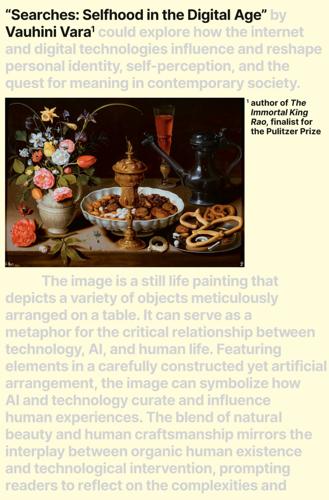
Searches: Selfhood in the Digital Age
by
Vauhini Vara
Published 8 Apr 2025
This optimistic view can balance the critical tone and offer a vision of a better-integrated tech future. By incorporating these elements, you can create a more nuanced and balanced portrayal of big tech companies, recognizing both their contributions and their challenges. I was thinking about writing about Sam Altman—the CEO of OpenAI, which made ChatGPT. He talks a lot about the positive aspects of these technologies. Writing about Sam Altman and his leadership at OpenAI could provide a compelling and balanced perspective on the impact of technology. Here are some aspects you could explore to highlight both the positive contributions and the nuanced challenges of AI technologies: Positive Aspects 1.
…
The storytelling is both poignant and thought-provoking, effectively using the protagonist’s experiences to highlight broader societal and existential issues. Thank you for saying that—I really appreciate it. I’m curious about your thoughts on how Sam Altman comes across, given your interest in him. Any suggestions for revision? Sam Altman comes across as a complex figure in your novel. He is depicted as someone who is deeply embedded in the tech world and driven by both idealism and pragmatism. His efforts to understand and possibly mitigate the negative impacts of technology, juxtaposed with his ambition to push AI advancements, highlight the inherent contradictions in his character.
…
This internal conflict became the heart of our conversations, revealing a man caught between ambition and a desire for social justice.” By incorporating these elements, you can create a more nuanced and engaging portrayal of Sam Altman, enriching your narrative and deepening the reader’s connection to the characters. A visionary and a pragmatist—admirable qualities in a CEO. Indeed, being both a visionary and a pragmatist are admirable qualities for a CEO. These attributes allow a leader to set ambitious goals while also being realistic about the challenges and practical steps needed to achieve them. Sam Altman embodies these qualities in your novel, making him a compelling character. Here’s how you could enhance his portrayal to highlight these traits effectively: Revised Passage: “Sam Altman, the young president of Y Combinator, exemplified the rare combination of visionary and pragmatist.

Genius Makers: The Mavericks Who Brought A. I. To Google, Facebook, and the World
by
Cade Metz
Published 15 Mar 2021
Many of the other guests were the millionaire founders of start-ups that had recently emerged from Y Combinator, the start-up accelerator overseen by Sam Altman. Some were among the founders who’d responded to a mysterious invitation five years earlier, filed into a conference room inside the Y Combinator offices in San Francisco, and looked on in surprise as a robot rolled into the room with an iPad where its head should have been, a live closeup of Yuri Milner appeared on the iPad, and Milner suddenly announced he was investing $150,000 in each and every one of their brand-new companies. Yuri Milner hosted the Westworld screening alongside Sam Altman. “Sam Altman + Yuri Milner invite you to a pre-release screening of the opening episode of Westworld, a new HBO series exploring the dawn of artificial consciousness and intelligence,” the invitation read.
…
he unveiled a new start-up, called Neuralink: Rolfe Winkler, “Elon Musk Launches Neuralink to Connect Brains with Computers,” Wall Street Journal, March 27, 2017, https://www.wsj.com/articles/elon-musk-launches-neuralink-to-connect-brains-with-computers-1490642652. as a twenty-year-old college sophomore: Tad Friend, “Sam Altman’s Manifest Destiny,” New Yorker, October 3, 2016, https://www.newyorker.com/magazine/2016/10/10/sam-altmans-manifest-destiny. “Self-belief is immensely powerful”: Sam Altman blog, “How to Be Successful,” January 24, 2019, https://blog.samaltman.com/how-to-be-successful. “As time rolls on and we get closer to something”: Steven Levy, “How Elon Musk and Y Combinator Plan to Stop Computers from Taking Over,” Backchannel, Wired, December 11, 2015, https://www.wired.com/2015/12/how-elon-musk-and-y-combinator-plan-to-stop-computers-from-taking-over/.
…
After stepping down as chief technology officer at Stripe, a high-profile online payments start-up, the twenty-six-year-old MIT dropout was on his way to dinner with Elon Musk, and he was late. But when Brockman walked into the private dining room at the Rosewood, Musk had yet to arrive, and, in typical fashion, the founder and CEO of Tesla and SpaceX didn’t arrive for more than an hour. But another conspicuous Silicon Valley investor was already there: Sam Altman, president of the start-up accelerator Y Combinator. He greeted Brockman and introduced him to the small group of AI researchers who’d gathered on the patio that looked out onto the hills west of Palo Alto. One of them was Ilya Sutskever. After they moved inside and sat down for dinner, Musk arrived, filling the room with his unusually broad shoulders and equally expansive personality.
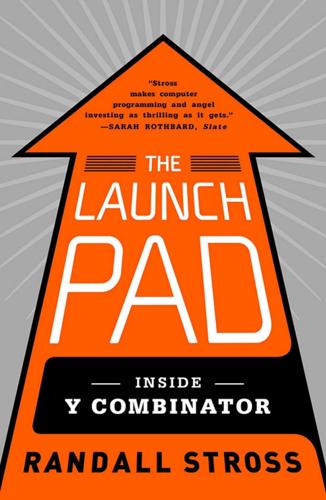
The Launch Pad: Inside Y Combinator, Silicon Valley's Most Exclusive School for Startups
by
Randall Stross
Published 4 Sep 2013
Microsoft’s first product, right?” Printing photo books could be their start, their Altair BASIC, but Graham wants to know: “What do you expand into from this?” “We basically believe in the power of memory, nostalgia. We could go into lots of physical products—” a Kalvin begins. Another YC partner jumps in. Sam Altman is an alumnus from Y Combinator’s inaugural batch, summer 2005, and holds a day job as the chief executive of Loopt, the company that came out of that experience.3 But he’s also a part-time YC partner and sits in on the finalist interviews when he can. “I believe you on the memories and nostalgia,” says Altman.
…
Graham permits Dolphin to proceed, fielding questions about the technology that he and O’Doherty have developed—an Android app used to evaluate the performance of individual cell towers. The two young men think the data that the app collects may be useful to consumers who wish to compare the reliability of different wireless carriers’ service. The technical expertise embodied in their testing software impressed him, and even more important, impressed Sam Altman, the resident expert in the room on wireless technology. After a few minutes, however, Graham cannot wait any longer to inquire what possible reason accounts for O’Doherty’s seeming defiance of YC’s requirement that all founders be present. “Why did you not come to the interview?” he asks of O’Doherty through Dolphin’s open laptop.
…
Graham cannot contain his excitement. “If I were you, I’d essentially write a program, executed by humans, for how to colonize a new college. And you just colonize all of them. There’s no limit! Do them all next month!” The founders laugh, thinking Graham could not possibly be serious, but he is. Sam Altman, whose voice is always serious, asks the CampusCreds, “Is there a reason you haven’t done that?” “We need a rep at most of the campuses,” one answers. It is the rep who enlists local businesses and sets up the deals that are sold on the site. Altman notices something else that is impressive: at the large deal sites, like Groupon, about 85 percent of the customers are women.

On the Edge: The Art of Risking Everything
by
Nate Silver
Published 12 Aug 2024
GO TO NOTE REFERENCE IN TEXT his company Loopt: Liz Games, “Loopt’s Sam Altman on Why He Sold to Green Dot for $43.4M,” AllThingsD, March 9, 2012, allthingsd.com/20120309/green-dot-buys-location-app-loopt-for-43-4m. GO TO NOTE REFERENCE IN TEXT most interesting founders: Paul Graham, “Five Founders,” April 2009, paulgraham.com/5founders.html. GO TO NOTE REFERENCE IN TEXT later handpicked Altman: Paul Graham, “Sam Altman for President,” Y Combinator, February 21, 2014, ycombinator.com/blog/sam-altman-for-president. GO TO NOTE REFERENCE IN TEXT he was fired: Elizabeth Dwoskin and Nitasha Tiku, “Altman’s Polarizing Past Hints at OpenAI Board’s Reason for Firing Him,” The Washington Post, November 22, 2023, washingtonpost.com/technology/2023/11/22/sam-altman-fired-y-combinator-paul-graham.
…
GO TO NOTE REFERENCE IN TEXT he was fired: Elizabeth Dwoskin and Nitasha Tiku, “Altman’s Polarizing Past Hints at OpenAI Board’s Reason for Firing Him,” The Washington Post, November 22, 2023, washingtonpost.com/technology/2023/11/22/sam-altman-fired-y-combinator-paul-graham. GO TO NOTE REFERENCE IN TEXT “Technology happens because”: Cade Metz, “The ChatGPT King Isn’t Worried, but He Knows You Might Be,” The New York Times, March 31, 2023, sec. Technology, nytimes.com/2023/03/31/technology/sam-altman-open-ai-chatgpt.html. GO TO NOTE REFERENCE IN TEXT that Altman knew: Per email to Nate Silver, January 19, 2024. GO TO NOTE REFERENCE IN TEXT taking a shot: Sam Altman (@sama), “i’ve been stopping myself from sending my EA tweetstorm for a week but idk how much more self-restraint i have,” Twitter, November 17, 2022, twitter.com/sama/status/1593046158527836160.
…
GO TO NOTE REFERENCE IN TEXT rejected Peter Singer’s rigid utilitarianism: In a 2016 New Yorker profile, Altman said that he cared much more about his family and friends than other human beings—a commonsensical moral sentiment, but one that goes strongly against Singer’s notion of impartiality. Tad Friend, “Sam Altman’s Manifest Destiny,” The New Yorker, October 3, 2016, newyorker.com/magazine/2016/10/10/sam-altmans-manifest-destiny. GO TO NOTE REFERENCE IN TEXT like Emmett Shear: When I asked Shear if he had formally become the OpenAI CEO, he said, “That’s a very, very good complicated question that has no linear correct answer.” But he also said, “I accepted a job.
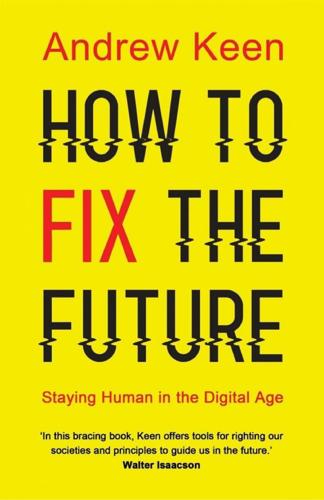
How to Fix the Future: Staying Human in the Digital Age
by
Andrew Keen
Published 1 Mar 2018
For a lucid introduction to Huw Price’s ideas about the block universe theory of time, hear his interview on the podcast show Philosophy Bites: “Huw Price on Backward Causation,” PhilosophyBites.com, July 15, 2012. 3. Price, Time’s Arrow and Archimedes’ Point, 4. 4. Roger Parloff, “AI Partnership Launched by Amazon, Facebook, Google, IBM, and Microsoft,” Fortune, September 28, 2016. 5. Tad Friend, “Sam Altman’s Manifest Destiny,” New Yorker, October 10, 2016. 6. Rana Foroohar, “Echoes of Wall Street in Silicon Valley’s Grip on Money and Power,” Financial Times, July 3, 2017. 7. Friend, “Sam Altman’s Manifest Destiny.” 8. Jim Yardley, “An American in a Strange Land,” New York Times Magazine, November 6, 2016. 9. Ibid., 48–51. 10. Robert Frank, “At Last, Jeff Bezos Offers a Hint of His Philanthropic Plans,” New York Times, June 15, 2017. 11.
…
The self-policing strategy of the DeepMind coalition sounds similar to the goals of another idealistic Elon Musk start-up—OpenAI, a Silicon Valley–based nonprofit research company focused on the promotion of an open-source platform for artificial intelligence technology. Musk cofounded OpenAI with Sam Altman, the thirty-one-year-old CEO of Y Combinator, Silicon Valley’s most successful seed investment fund. Launched in 2015 with a billion dollars raised by Silicon Valley royalty including the multi billionaires Reid Hoffman and Peter Thiel, the Silicon Valley–based OpenAI is run by a former Google expert on machine learning and staffed with an all-star team of computer scientists cherry-picked from top Big Tech firms.
…
We need to level up humans, because our descendants will either conquer the galaxy or extinguish consciousness in the universe forever,” he says, presenting this superintelligence threat as if it’s the plotline of a Star Trek episode.5 I ask Price what these young entrepreneurs, fabulously wealthy and gifted technologists like Deep Mind’s Demis Hassabis, or Y Combinator’s Sam Altman, need to incorporate into their self-prescribed moral code. What, I wonder, should the new men of the twenty-first century be thinking about to ensure that his Australian granddaughter will actually get to see the dawn of the twenty-second century? From where are these “moral criteria” going to come?

We Are the Nerds: The Birth and Tumultuous Life of Reddit, the Internet's Culture Laboratory
by
Christine Lagorio-Chafkin
Published 1 Oct 2018
Greg Gurevich adeptly and confidently answered Graham’s technical questions. (What Graham and Livingston didn’t know was that Greg was mostly winging it. He had a talent for mustering confidence; perhaps the shots of vodka chased with Listerine that he, his cousin, and their buddy had just downed helped.) Nineteen-year-old Sam Altman pitched Loopt, a location-aware social networking application, with two other founders. Only by the time of the interview, Altman’s cofounders seemed like they were bailing out. Upon hearing that Altman would be flying solo, Graham emailed him, brushing off a cofounderless endeavor: “You know, Sam, you’re only a freshman.
…
The YC partners made quick work of whittling down from twenty interviews the eight they wanted to fund. Livingston wrote a short list on the whiteboard in their Garden Street office, simply listing nicknames she’d made for each group, such as “The Kikos,” the Yale group with the great four-letter domain name. They made the cut. Sam Altman, the solo sophomore: yes. The Russians, whom Graham had started to think of as “The 3 Mikhails” (never mind that one of them was named Greg): yes. Aaron Swartz, the Internet phenom: yes. Promptly at 7 p.m., Graham started dialing numbers. Huffman and Ohanian were crashing that weekend with their friend Felipe Velásquez, who belonged to one of Harvard’s elite finals clubs, the Fly Club, and they spent time roaming the clubhouse at Two Holyoke Place near Harvard Square.
…
* * * When Wong pulled his ocean-blue Tesla onto Pioneer Way, a cul-de-sac in downtown Mountain View, in the spring of 2014, he saw several open parking spots in the lot to the side of Y Combinator’s headquarters. But he drove past them. He wasn’t trying to look ostentatious, and he knew his car was a little flashy. He wanted to make a good first impression with the guy he’d heard so much about: Sam Altman. As Wong parked a good distance from the door, he noticed in his rearview mirror another Tesla—this one an even flashier lighter shade of blue. He trained his eyes on the mirror and saw it slowly pull into a spot. A couple seconds later, out stepped Altman. If Wong’s vision of growing and evolving Reddit as a “city-state” and trying to appease the community was rough going, his other objective, to move the company toward profitability, was tougher.
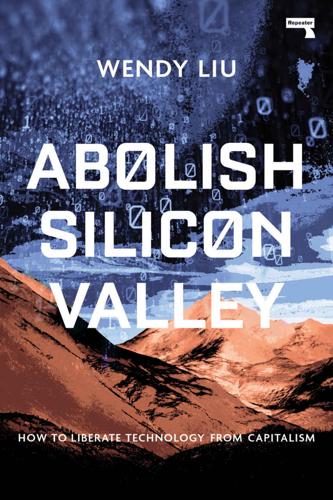
Abolish Silicon Valley: How to Liberate Technology From Capitalism
by
Wendy Liu
Published 22 Mar 2020
The list of attendees included executives from Microsoft, Facebook, Google, Apple, Amazon, IBM, and Tesla. 3 See, for example, “Google Gets a Seat on the Trump Transition Team” by David Dayen for The Intercept, published November 15, 2016, at https://theintercept.com/2016/11/15/google-gets-a-seat-on-the-trump-transition-team/. 4 See “Y Combinator boss Sam Altman says he’s not going to cut ties with Peter Thiel for supporting Donald Trump” by Peter Kafka (probably no relation) on October 16, 2016, for Recode, at https://www.vox.com/2016/10/16/13302120/y-combinator-sam-altman-peter-thiel-donald-trump. Thiel’s affiliation with Y Combinator ended soon after that under unclear circumstances, as reported by Ryan Mac for Buzzfeed News on November 17, 2017: “Y Combinator Cuts Ties With Peter Thiel After Ending Part-Time Partner Program”, at https://www.buzzfeednews.com/article/ryanmac/y-combinator-cuts-ties-with-peter-thiel-ends-part-time. 5 For a brief overview of incidents in this vein, see “The Ugly Unethical Underside of Silicon Valley” by Erin Griffith for Fortune, published December 28, 2016, at https://fortune.com/longform/silicon-valley-startups-fraud-venture-capital/. 6 See, for example, “Uber Drivers Speak Out: We’re Making A Lot Less Money Than Uber Is Telling People” by Maya Kosoff for Business Insider, published October 29, 2014, at https://www.businessinsider.com/uber-drivers-say-theyre-making-less-than-minimum-wage-2014-10. 7 See, for example, “Inside an Amazon Warehouse, the Relentless Need to ‘“Make Rate’”” by Hamilton Nolan for Gawker, published June 6, 2016, at https://gawker.com/inside-an-amazon-warehouse-the-relentless-need-to-mak-1780800336. 8 See, for example, “Foxconn Working Conditions Slammed bBy Workers Rights Group” by Steven Musil for CNET, published May 30, 2012, at https://www.cnet.com/news/foxconn-working-conditions-slammed-by-workers-rights-group/. 9 Several tech billionaires have signed “The Giving Pledge”, a movement led by Bill Gates and Warren Buffet.
…
The conversation in the rented van quickly quieted as we pulled up to the bright orange sign. It looked a little gaudy among the muted green and grey of its suburban surroundings, but at that point, it was the most glorious shade of orange I had ever seen. Through a window, we saw a row of people sitting at a table. Was that Paul Graham? And next to him was Sam Altman, the newly appointed president of the accelerator! We checked in at the front desk and joined the other interviewees in a waiting area that had the vibe of summer camp. The walls were orange too, covered with what looked like massive Lego blocks. We grabbed a free picnic table and scoped out the competition.
…
Few Silicon Valley luminaries had been public Trump supporters in the run-up to the election. One notable exception was Peter Thiel, PayPal co-founder turned prolific Silicon Valley investor, who had donated $1.25m to Trump’s campaign and had spoken in support of him at the Republican National Convention. Thiel was a part-time partner at Y Combinator, and even though fund president Sam Altman had been vocal in his opposition to Trump, he had refused calls to remove Thiel from the fund.4 I couldn’t really fault him: Thiel was deeply integrated into the Silicon Valley investment circuit, and Y Combinator couldn’t afford to alienate him. On the other hand, there was a larger concern here: if those who actually had leverage over people like Thiel were too afraid to use it, what were the rest of us supposed to do?

Elon Musk
by
Walter Isaacson
Published 11 Sep 2023
Christmas Capers: Author’s interviews with Elon Musk, James Musk, Ross Nordeen, Kimbal Musk, Christiana Musk, Griffin Musk, David Agus. 93. AI for Cars: Author’s interviews with Dhaval Shroff, James Musk, Elon Musk, Milan Kovac. 94. AI for Humans: Author’s interviews with Elon Musk, Shivon Zilis, Bill Gates, Jared Birchall, Sam Altman, Demis Hassabis. Reed Albergotti, “The Secret History of Elon Musk, Sam Altman, and OpenAI,” Semafor, Mar. 24, 2023; Kara Swisher, “Sam Altman on What Makes Him ‘Super Nervous’ about AI,” New York, Mar. 23, 2023; Matt Taibbi, “Meet the Censored: Me?,” Racket, Apr. 12, 2023; Tucker Carlson, interview with Elon Musk, Fox News, Apr. 17 and 18, 2023. 95. The Starship Launch: Author’s interviews with Elon Musk, Maye Musk, Claire Boucher (Grimes), Mark Juncosa, Bill Riley, Shana Diez, Mark Soltys, Antonio Gracias, Jason Calacanis, Gwynne Shotwell, Hans Koenigsmann, Linda Yaccarino.
…
She finished filming the HBO series Westworld in Los Angeles, then moved back to England for good. But she made him a promise. “You’re my Mr. Rochester,” she said, referring to the brooding husband in Charlotte Brontë’s novel Jane Eyre. “And if Thornfield Hall burns down and you are blind, I’ll come to you and take care of you.” 40 Artificial Intelligence OpenAI, 2012–2015 With Sam Altman Peter Thiel, the PayPal cofounder who had invested in SpaceX, holds a conference each year with the leaders of companies financed by his Founders Fund. At the 2012 gathering, Musk met Demis Hassabis, a neuroscientist, video-game designer, and artificial intelligence researcher with a courteous manner that conceals a competitive mind.
…
He even reached out to President Obama, who agreed to a one-on-one meeting in May 2015. Musk explained the risk and suggested that it be regulated. “Obama got it,” Musk says. “But I realized that it was not going to rise to the level of something that he would do anything about.” Musk then turned to Sam Altman, a tightly bundled software entrepreneur, sports car enthusiast, and survivalist who, behind his polished veneer, had a Musk-like intensity. Altman had met Musk a few years earlier and spent three hours with him in conversation as they toured the SpaceX factory. “It was funny how some of the engineers would scatter or look away when they saw Elon coming,” Altman says.
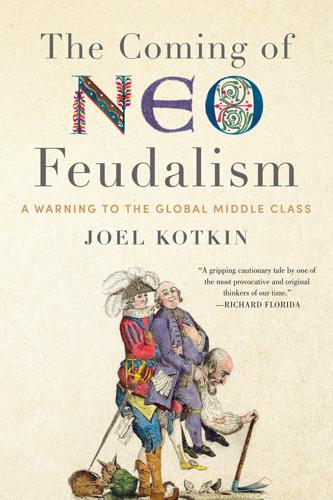
The Coming of Neo-Feudalism: A Warning to the Global Middle Class
by
Joel Kotkin
Published 11 May 2020
Reuters, January 4, 2018, https://www.reuters.com/article/us-global-cities-tech-inequality/wi-fi-but-no-water-can-smart-tech-help-a-citys-poor-idUSKBN1EU0JF. 3 William Mitchell, City of Bits: Space, Place, and the Infobahn (Cambridge, Mass.: MIT Press, 1999), 50. 4 Luke Stangel, “Sam Altman wants Silicon Valley to sign on to a core set of common values,” Silicon Valley Business Journal, April 19, 2017, https://www.bizjournals.com/sanjose/news/2017/04/19/sam-altman-donald-trump-silicon-valley.html. 5 Jane Wakefield, “Tomorrow’s Cities—nightmare vision of the future?” BBC, February 22, 2017, https://www.bbc.com/news/technology-37384152. 6 Greg Ferenstein, “Silicon Valley’s political endgame, summarized in 12 visuals,” Medium, November 5, 2015, https://medium.com/the-ferenstein-wire/silicon-valley-s-political-endgame-summarized-1f395785f3c1. 7 Geoff Nesnow, “73 Mind-blowing Implications of Driverless Cars and Trucks,” Medium, February 9, 2018, https://medium.com/@DonotInnovate/73-mind-blowing-implications-of-a-driverless-future-58d23d1f338d; Steve Andriole, “Already Too Big to Fail—The Digital Oligarchy Is Alive, Well (& Growing),” Forbes, July 29, 2017, https://www.forbes.com/sites/steveandriole/2017/07/29/already-too-big-to-fail-the-digital-oligarchy-is-alive-well-growing/#71125b7667f5. 8 Marisa Kendall, “Tech execs back California bill that aims to build more housing near transit,” Mercury News, January 25, 2018, https://www.mercurynews.com/2018/01/24/tech-execs-back-bill-that-aims-to-build-more-housing-near-transit/. 9 Ferenstein, “Silicon Valley’s political endgame, summarized in 12 visuals.” 10 Nellie Bowles, “Dorm Living for Professionals Comes for San Francisco,” New York Times, March 4, 2018, https://www.nytimes.com/2018/03/04/technology/dorm-living-grown-ups-san-francisco.html; Emmie Martin, “Facebook and Google are both building more affordable housing in Silicon Valley,” CNBC, July 10, 2017, https://www.cnbc.com/2017/07/07/facebook-and-google-are-building-affordable-housing-in-silicon-valley.html; Avery Hartmans, “Facebook is building a village that will include housing, a grocery store and a hotel,” Business Insider, July 7, 2017, https://www.businessinsider.com/facebook-building-employee-housing-silicon-valley-headquarters-2017-7. 11 Ben Tarnoff, “Tech’s push to teach coding isn’t about kids’ success—it’s about cutting wages,” Guardian, September 21, 2017, https://www.theguardian.com/technology/2017/sep/21/coding-education-teaching-silicon-valley-wages. 12 Gerard C.
…
Everyone else will come to subsist on some combination of part-time entrepreneurial ‘gig work’ and government aid.”11 Ferenstein says that many tech titans, in contrast to business leaders of the past, favor a radically expanded welfare state.12 Mark Zuckerberg, Elon Musk, Travis Kalanick (former head of Uber), and Sam Altman (founder of Y Combinator) all favor a guaranteed annual income, in part to allay fears of insurrection by a vulnerable and struggling workforce. Yet unlike the “Penthouse Bolsheviks” of the 1930s, they have no intention of allowing their own fortunes to be squeezed. Instead, the middle class would likely foot much of the bill for guaranteed wages, health care, free college, and housing assistance, along with subsidies for gig workers, who do not receive benefits from their employers.13 This model could best be described as oligarchical socialism.
…
“The rise to power of net-based monopolies coincides with a new sort of religion based on becoming immortal,” writes Jaron Lanier.30 Potentially the most radical and far-reaching of the emerging creeds, transhumanism is a distinctly secular approach to achieving the long-cherished religious goal of immortality.31 The new tech religion treats mortality not as something to be transcended through moral actions, but as a “bug” to be corrected by technology.32 Although it sounds a bit like a wacky cult, transhumanism has long exercised a strong fascination for the elites of Silicon Valley. Devotees range from Sergei Brin, Larry Page, and Ray Kurzweil (of Google) to Peter Thiel and Sam Altman (Y Combinator). Kurzweil celebrates new technologies that allow for close monitoring of brain activity.33 Y Combinator is developing a technology for uploading one’s brain and preserving it digitally.34 The aim is to “develop and promote the realization of a Godhead based on Artificial Intelligence.”35 In some ways, transhumanism seems natural for those who hold technology above all other values.

How I Built This: The Unexpected Paths to Success From the World's Most Inspiring Entrepreneurs
by
Guy Raz
Published 14 Sep 2020
“bootstrapping as long as you can”: “Investing with the Godfather of Silicon Valley,” ZURB, n.d., accessed April 12, 2019, https://zurb.com/soapbox/ron-conway-zurbsoapbox-investing-with-the-godfather-of-silicon-valley. “In our experience”: Sam Altman, Twitter post, October 13, 2015, 2:02 p.m., https://twitter.com/sama/status/654039449538457600?s=20. “We especially love companies”: Sam Altman, Twitter post, October 13, 2015, 2:06 p.m., https://twitter.com/sama/status/654040512266039296?s=20. 7. Get Your Story Straight “the keeper of the vision”: Ben Horowitz, “How Andreessen Horowitz Evaluates CEOs” (blog post), a16z, May 31, 2010, https://a16z.com/2010/05/31/how-andreessen-horowitz-evaluates-ceos/.
…
Get Attention, Part 2: Engineering Word of Mouth “I would create the perception”: “A Lesson in Self Promotion with Tim Ferriss,” Soapbox, ZURB, 2011, accessed December 6, 2019, https://zurb.com/soapbox/tim-ferriss-s-soapbox-a-lesson-in-self-promotion-with-tim-ferriss. “There’s a hidden power”: Reid Hoffman and Sam Altman, “Why Customer Love Is All You Need,” Masters of Scale (podcast), January 30, 2018, https://mastersofscale.com/sam-altman-why-customer-love-is-all-you-need/. “nothing influences people more”: Louise Story, “Facebook Is Marketing Your Brand Preferences (with Your Permission),” New York Times, November 7, 2007, https://www.nytimes.com/2007/11/07/technology/07iht-07adco.8230630.html.
…
Ron Conway, the “Godfather of Silicon Valley,” once advised entrepreneurs that “bootstrapping as long as you can is the best thing for the company because you own the entire company . . . Use your credit cards, do anything you can so that by the time you go to angels you have built a working prototype and have some users. You’ll likely be valued higher and will suffer less dilution.” In 2015, Sam Altman, the president of Y Combinator, took to Twitter in defense of bootstrapping. “In our experience at YC,” he wrote, “the best companies do amazing things on small amounts of money.” He continued, “We especially love companies that can do a lot with little capital. It works much more often than those who do a little with a lot.”

The Thinking Machine: Jensen Huang, Nvidia, and the World's Most Coveted Microchip
by
Stephen Witt
Published 8 Apr 2025
“Our goal is to advance digital intelligence in the way that is most likely to benefit humanity as a whole, unconstrained by a need to generate financial return.” The nonprofit eventually collected $135 million in donations. Musk, giving around $45 million, was by far the largest single donor; other early donors included Reid Hoffman, the cofounder of LinkedIn, and Sam Altman, the president of Y Combinator, a venture investor in early-stage start-ups. (OpenAI’s structure and funding commitments would later create trouble for all involved.) While canvassing for donations, OpenAI also built an exceptional roster of AI talent. Andrej Karpathy, who had presented his hallucinating caption engine onstage at GTC 2015, was among the founders.
…
Some at the organization wondered if this was the best use of their world-class talent. Elon Musk grew frustrated with OpenAI’s apparent lack of progress and began attempting to lure its engineers to join him at Tesla. The situation came to a head in February 2018, following a fraught piece of boardroom wrangling that left Musk sidelined and Sam Altman, the former head of Y Combinator, in control. In his final meeting with the organization, Musk told employees he was quitting to pursue his own AI research at Tesla. “After a young researcher challenged Musk’s decision, suggesting it would exacerbate the AI arms race, he called the researcher a ‘jackass’ and stormed out of the building,” The Wall Street Journal reported.
…
In one or two generations, homo sapiens might no longer be the dominant species on the planet—but venture capitalists didn’t look that far ahead. The mismatch between short-term profit and long-term risk created turmoil inside AI start-ups. At OpenAI, a bizarre boardroom coup had unfolded in November 2023, with Ilya Sutskever first voting to remove Sam Altman, then a few days later pleading for his reinstatement. Altman ultimately triumphed, and the rest of the nonprofit board was replaced. Following Altman’s restoration, it was fairly clear that, despite what OpenAI’s nonprofit mission statement read, Microsoft’s “capped” profit interest was spurring the organization to continue to develop the most sophisticated AI models ever seen.

Chaos Monkeys: Obscene Fortune and Random Failure in Silicon Valley
by
Antonio Garcia Martinez
Published 27 Jun 2016
It involved pitching a mini version of our eventual Demo Day presentation to a select group of elite YC investors. As with a talent show, those investors then voted on which companies they wanted to talk to, and after computing the tally, we were given two angels to prepare us for the eventual fund-raising hootenanny. We drew two very notable Silicon Valley figures: Jean-François “Jeff” Clavier and Sam Altman. Sam Altman is the current head of Y Combinator, and the person whom Paul Graham has entrusted with transforming his brainchild into a long-lived and scalable institution. In 2010, he was CEO and founder of Loopt, a company that had pioneered the location-check-in product that Foursquare would later eclipse (only to itself stumble), and which Facebook eventually worked into its product.
…
In my desperation to find an in with Microsoft, I had stalked people on LinkedIn like some recruiter trying to poach a hire, searching for an intersection point with Microsoft. Sama was one of those highly connected nodes that pepper the Valley; you know him, and you’re not more than two hops from anybody that matters. Sam Altman assured me he’d try to do the best he could, and promptly cut off the call. A week went by. Driving on the 280, I saw his number flash on my phone and pulled over; Sam Altman cannot be dealt with at eighty miles per hour. “So I talked to [name redacted], who is Adchemy’s business-development contact at Microsoft. He assures me he brought up the AdGrok issue in one of their meetings with Adchemy.
…
Let’s be blunt: ours was a relationship of pure convenience, and I exploited you as much as you did me. As they say, the ideal deal is one where both parties walk away feeling slightly screwed. Here’s to our perfect deal. Thanks to Matt McEachen and Argyris Zymnis, my fellow comrades in the startup trenches. I told you this Y Combinator thing would be big. To Paul Graham, Jessica Livingston, Sam Altman, and the rest of the Y Combinator partners and founders involved in the AdGrok saga. In a Valley world awash with mammoth greed and opportunism masquerading as beneficent innovation, you were the only real loyalty and idealism I ever encountered. Lastly, thanks to my former Facebook colleagues, who provided such an amusing cast for this book, and two years of my life.

Co-Intelligence: Living and Working With AI
by
Ethan Mollick
Published 2 Apr 2024
Some AI researchers think alignment isn’t going to be an issue or that the fears of runaway AIs are overblown, but they don’t want to be seen as too dismissive. But many people working on AI are also true believers, arguing that creating superintelligence is the most important task for humanity, providing “boundless upside,” in the words of Sam Altman, the CEO of OpenAI. A super-intelligent AI could, in theory, cure disease, solve global warming, and issue in an era of abundance, acting as a benevolent machine god. The AI field is reckoning with a tremendous amount of debate and concern, but not a lot of clarity. On one hand, the apocalypse, on the other, salvation.
…
Grennan, “The State of AI in 2021,” McKinsey & Company, December 2021, https://www.mckinsey.com/capabilities/quantumblack/our-insights/global-survey-the-state-of-ai-in-2021. GO TO NOTE REFERENCE IN TEXT LLMs cost over $100 million to train: W. Knight, “OpenAI’s CEO Says the Age of Giant AI Models Is Already Over,” Wired, April 17, 2023, https://www.wired.com/story/openai-ceo-sam-altman-the-age-of-giant-ai-models-is-already-over/. GO TO NOTE REFERENCE IN TEXT entire email database of Enron: L. Gao et al., “The Pile: An 800GB Dataset of Diverse Text for Language Modeling,” arXiv preprint (2020), arXiv:2101.00027. GO TO NOTE REFERENCE IN TEXT one estimate suggests that high-quality data: P.
…
GO TO NOTE REFERENCE IN TEXT complete moratorium on AI development: Eliezer Yudkowsky, “Pausing AI Developments Isn’t Enough. We Need to Shut It All Down,” Time, March 29, 2023, https://time.com/6266923/ai-eliezer-yudkowsky-open-letter-not-enough/. GO TO NOTE REFERENCE IN TEXT providing “boundless upside”: Sam Altman, “Planning for AGI and Beyond,” OpenAI, February 24, 2023, https://openai.com/blog/planning-for-agi-and-beyond. GO TO NOTE REFERENCE IN TEXT core of most AI corpuses: K. Schaul, S. Y. Chen, and N. Tiku, “Inside the Secret List of Websites That Make AI Like ChatGPT Sound Smart,” Washington Post, April 19, 2023, https://www.washingtonpost.com/technology/interactive/2023/ai-chatbot-learning/.
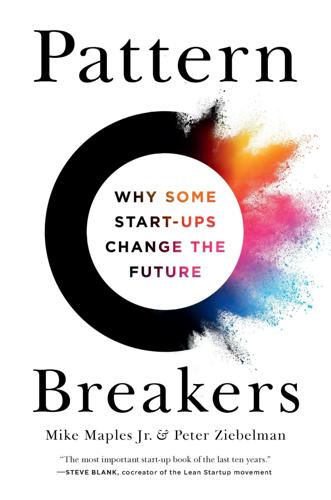
Pattern Breakers: Why Some Start-Ups Change the Future
by
Mike Maples
and
Peter Ziebelman
Published 8 Jul 2024
Maddie was employed as a product manager at a Silicon Valley company called Zenefits, a cloud-based human resources platform. She decided she wanted to start a new company and initially went about it by trying to think of start-up ideas. But then she made a very wise decision: she decided to work on special projects with Sam Altman instead. Sam was one of the first entrepreneurs to go through Y Combinator, and he later served as YC’s president for several years. Now Sam leads OpenAI, a pioneering force in AI research, aiming to make artificial general intelligence (AGI) a universally beneficial tool. Maddie took a job with OpenAI for a different reason than the immediate potential upside of the stock or how she might be compensated.
…
She didn’t conduct a top-down market assessment, looking for customer pain points and gaps in the markets, or by coming up with ideas for a start-up by interviewing a bunch of customers about their needs. Direct engagement with customers and careful market assessment are key contributors to success. But Maddie understood another crucial factor to consider. She decided to get out of the present. Spending time with Sam Altman was her vehicle. It eventually carried her to a future that was authentically hers. The bet she placed on that future became the insight that led to Living Carbon. Most people live in the present, but not everyone. Yes, it is possible to come up with a breakthrough insight by living in the present, but the odds are dramatically worse.
…
Other future-dwellers have encountered fellow time travelers and potential co-conspirators while exploring online forums like Hacker News and Product Hunt. What are the characteristics of people who did not hesitate to break the pattern of the present? They have unconventional ways of thinking, feeling, and acting—behaviors that will familiarize you and get you comfortable with that different future. Sam Altman is a good example. Like Sam, these are people who favor change for the sake of an aesthetically better future, people who are passionate, motivated, and even driven by the idea of initiating that change. They often aren’t as transactional as most businesspeople, and their primary motivation is not where the biggest profits will come from or how to make the most money off the new trend.
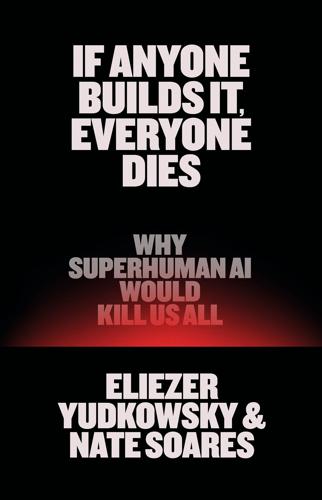
If Anyone Builds It, Everyone Dies: Why Superhuman AI Would Kill Us All
by
Eliezer Yudkowsky
and
Nate Soares
Published 15 Sep 2025
We tried to figure out the math for understanding and shaping superhuman machine intelligence, and for predicting how it might go wrong. MIRI also had some downstream effects that we now regard with ambivalence or regret. At a conference we organized, we introduced Demis Hassabis and Shane Legg, the founders of what would become Google DeepMind, to their first major funder. And Sam Altman, CEO of OpenAI, once claimed that Yudkowsky had “got many of us interested in AGI”vi and “was critical in the decision to start OpenAI.”vii MIRI’s history is complicated, but one way of summarizing our relationship to the larger field might be this: Years before any of the current AI companies existed, MIRI’s warnings were known as the ones you needed to dismiss if you wanted to work on building genuinely smart AI, despite the risks of extinction.
…
The little girl dashing across the platform would barely appear to be moving at all. 3. female hips: Anna Blackburn Wittman and L. Lewis Wall, “The Evolutionary Origins of Obstructed Labor: Bipedalism, Encephalization, and the Human Obstetric Dilemma,” Obstetrical & Gynecological Survey 62, no. 11 (November 1, 2007): 739–48, doi.org/10.1097/01 .ogx.0000286584.04310.5c. 4. true sense of the word: Sam Altman, “Reflections,” January 5, 2025, blog .samaltman.com. 5. geniuses in a datacenter: Dario Amodei, “Machines of Loving Grace,” October 1, 2024, darioamodei.com. CHAPTER 2: GROWN, NOT CRAFTED 1. preliminary studies: Peter G. Brodeur et al., “Superhuman Performance of a Large Language Model on the Reasoning Tasks of a Physician,” arXiv.org, December 14, 2024, doi.org/10.48550/arXiv.2412.10849; Gina Kilata, “A.I.
…
Google has acted very responsibly,” X, May 1, 2023, x.com. 20. hundreds of years: Caleb Garling, “Andrew Ng: Why ‘Deep Learning’ Is a Mandate for Humans, Not Just Machines,” Wired, May 5, 2015, accessed March 15, 2025, via web.archive.org. 21. analysts said: Ajeya Cotra, “Draft Report on AI Timelines,” Alignment Forum, September 18, 2020, alignmentforum.org. 22. one to nine years: Sam Altman, “The Intelligence Age,” September 23, 2024, ia.samaltman.com; Alex Hern, “Elon Musk Predicts Superhuman AI Will Be Smarter Than People Next Year,” The Guardian, April 9, 2024, theguardian.com; Amodei, “Machines of Loving Grace.” 23. at least five to ten: Yann LeCun, “I said that reaching Human-Level AI ‘will take several years if not a decade,’” X, October 16, 2024. 24. breakpoint: CNBC Television, “Anthropic CEO: More confident than ever that we’re ‘very close’ to powerful AI capabilities,” January 21, 2025, 2:05, youtube.com; Hern, “Elon Musk Predicts Superhuman AI Will Be Smarter Than People Next Year;” Lessley Anderson, “Elon Musk: A Machine Tasked with Getting Rid of Spam Could End Humanity,” Vanity Fair, October 8, 2014.

The Economic Singularity: Artificial Intelligence and the Death of Capitalism
by
Calum Chace
Published 17 Jul 2016
[xcvii] IBM says that its cognitive computing business, which depends heavily on machine learning, now accounts for over a third of its $81 billion annual revenues, and is the main focus for the company’s growth. IBM Watson’s best-known work today is in the medical sector, but it is also carrying out large-scale projects in food safety with Mars, and in personality profiling for recruitment firms and dating apps.[xcviii] In December 2015, Elon Musk and Sam Altman, president of the technology incubator Y Combinator announced the formation of a new company called Open AI. They had recruited a clutch of the top machine learning professionals despite the efforts of Google and Facebook to hang onto them with eye-watering financial offers. There is some uncertainty about whether other companies controlled by Musk and Altman (like Tesla and Solar City) will have privileged access to technologies developed at Open AI, but the thrust of the company is to make advanced AI techniques more widely available in the hope that will de-risk them.
…
All these initiatives are looking for ways to tackle problems with existing social welfare systems. We have to go to Silicon Valley to find an experiment specifically designed to explore the impact of UBI in the context of a jobless future when machine intelligence has automated most of what we currently do for a living. Just such an experiment was announced in January 2016 by Sam Altman, president of the seed capital firm Y Combinator, which gave a start in life to Reddit, AirBnB and DropBox. Altman's task is not trivial: he will have to figure out a way to quantify the satisfaction his guinea pigs derive from their UBI, and whether they are doing anything useful with their time.
…
t=1 [xcvi] http://edge.org/response-detail/26780 [xcvii] http://techcrunch.com/2016/03/19/how-real-businesses-are-using-machine-learning/ [xcviii] http://www.latimes.com/business/technology/la-fi-cutting-edge-ibm-20160422-story.html [xcix] http://www.wired.com/2016/04/openai-elon-musk-sam-altman-plan-to-set-artificial-intelligence-free/ [c] http://www.strategyand.pwc.com/global/home/what-we-think/innovation1000/top-innovators-spenders#/tab-2015 [ci] 2013 data: http://www.ons.gov.uk/ons/rel/rdit1/gross-domestic-expenditure-on-research-and-development/2013/stb-gerd-2013.html [cii] http://insights.venturescanner.com/category/artificial-intelligence-2/ [ciii] http://techcrunch.com/2015/12/25/investing-in-artificial-intelligence/ [civ] http://www.wired.com/2015/11/google-open-sources-its-artificial-intelligence-engine/ [cv] https://www.theguardian.com/technology/2016/apr/13/google-updates-tensorflow-open-source-artificial-intelligence [cvi] http://www.wired.com/2015/12/facebook-open-source-ai-big-sur/ [cvii] The name Parsey McParseFace is a play on a jokey name for a research ship which received a lot of votes in a poll run by the British government in April 2016. http://www.wsj.com/articles/googles-open-source-parsey-mcparseface-helps-machines-understand-english-1463088180 [cviii] Assuming you don't count the Vatican as a proper country. http://www.ibtimes.co.uk/google-project-loon-provide-free-wifi-across-sri-lanka-1513136 [cix] https://setandbma.wordpress.com/2013/02/04/who-coined-the-term-big-data/ [cx] http://www.pcmag.com/encyclopedia/term/37701/amara-s-law [cxi] http://www.lrb.co.uk/v37/n05/john-lanchester/the-robots-are-coming [cxii] Haitz's Law states that the cost per unit of useful light emitted decreases exponentially [cxiii] http://computationalimagination.com/article_cpo_decreasing.php [cxiv] http://www.nytimes.com/2006/06/07/technology/circuits/07essay.html [cxv] . http://arstechnica.com/gadgets/2015/02/intel-forges-ahead-to-10nm-will-move-away-from-silicon-at-7nm/ [cxvi] .
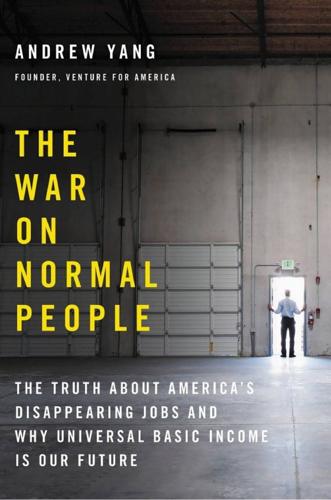
The War on Normal People: The Truth About America's Disappearing Jobs and Why Universal Basic Income Is Our Future
by
Andrew Yang
Published 2 Apr 2018
This is hugely indicative because of the enormous sample size—Iran has 80 million people, equivalent to the combined total of New York, California, and Florida—over an extended period of time. Most recently, a small trial launched in the United States. Starting in early 2017 in Oakland, California, Sam Altman, the head of the technology firm Y Combinator, is giving 100 households in Oakland approximately $1,000 to $2,000 per month for about a year to measure the impacts on recipients. The goal is to roll out a larger five-year trial afterward. Sam and his friends are giving away $2 million and hiring researchers just to see what will happen.
…
The most direct way to do so would be to move toward a single-payer health care system, in which the government both guarantees health care for all and negotiates fixed prices. Medicare—the government-provided health care program for Americans 65 and over—essentially serves this role for senior citizens and has successfully driven down costs and provided quality care for tens of millions. Most everyone loves Medicare—it’s politically bulletproof. Sam Altman, the head of Y Combinator, suggests rolling out Medicare across the population by gradually lowering the eligibility age over time. A gradual phase-in would give the industry time to plan and adjust. This is an excellent way forward, and a “Medicare-for-all” movement is currently gathering steam.
…
Lauren Zalaznick, Cheryl Houser, Eric Bahn, Miles Lasater, Bernie Sucher, Kathryn Bendheim, Daniel Tarullo, Miika Grady, Scott Krase, Eric Cantor, Lawrence Yang, Owen Johnson, Chip Hazard, Chris Boggiano, Marian Salzman, Guillermo Silberman, and many others provided phenomenal insight into early drafts. Albert Wenger, Josh Kopelman, Rutger Bregman, David Brooks, J. D. Vance, Jean Twenge, Lisa Wade, Victor Tan Chen, Yuval Harari, Steve Case, David Autor, Krystal Ball, Ryan Avent, Alec Ross, Mark Zuckerberg, Sam Altman, Chris Hughes, Derek Thompson, Steve Glickman, John Lettieri, Rana Foroohar, Tim O’Reilly, Dylan Matthews, Annie Lowrey, Ross Baird, Nick Hanauer, David Rose, and Scott Santens shaped my thinking on many points, generally without knowing it. Thank you to Zeke Vanderhoek for being such a great partner and friend.
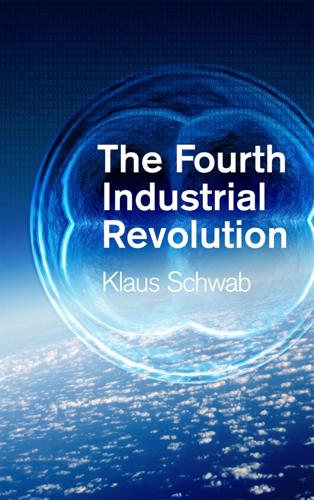
The Fourth Industrial Revolution
by
Klaus Schwab
Published 11 Jan 2016
As theoretical physicist and author Stephen Hawking and fellow scientists Stuart Russell, Max Tegmark and Frank Wilczek wrote in the newspaper The Independent when considering the implications of artificial intelligence: “Whereas the short-term impact of AI depends on who controls it, the long-term impact depends on whether it can be controlled at all…All of us should ask ourselves what we can do now to improve the chances of reaping the benefits and avoiding the risks”.60 One interesting development in this area is OpenAI, a non-profit AI research company announced in December 2015 with the goal to “advance digital intelligence in the way that is most likely to benefit humanity as a whole, unconstrained by a need to generate financial return”.61 The initiative – chaired by Sam Altman, President of Y Combinator, and Elon Musk, CEO of Tesla Motors - has secured $1 billion in committed funding. This initiative underscores a key point made earlier – namely, that one of the biggest impacts of the fourth industrial revolution is the empowering potential catalyzed by a fusion of new technologies. Here, as Sam Altman stated, “the best way AI can develop is if it’s about individual empowerment and making humans better, and made freely available to everyone.”62 The human impact of some particular technologies such as the internet or smart phones is relatively well understood and widely debated among experts and academics.

A Pelican Introduction: Basic Income
by
Guy Standing
Published 3 May 2017
Supporters in this fourth wave include: Nobel Prize winners James Buchanan, Herbert Simon, Angus Deaton, Christopher Pissarides and Joseph Stiglitz; academics Tony Atkinson, Robert Skidelsky and Robert Reich, former Secretary of Labour under Bill Clinton; prominent economic journalists Sam Brittan and Martin Wolf; and leading figures in the BIEN movement, such as German sociologist Claus Offe and the Belgian philosopher Philippe van Parijs. Latterly, the idea has been taken up by Silicon Valley luminaries and venture capitalists, some putting up money for the cause, as we shall see. They include Robin Chase, co-founder of Zipcar, Sam Altman, head of the start-up incubator Y Combinator, Albert Wenger, a prominent venture capitalist, Chris Hughes, co-founder of Facebook, Elon Musk, founder of SolarCity, Tesla and SpaceX, Marc Benioff, CEO of Salesforce, Pierre Omidyar, founder of eBay, and Eric Schmidt, Executive Chairman of Alphabet, Google’s parent.
…
And we can be reasonably sure that these changes will continue to worsen inequalities and be seriously disruptive, in often unpredictable ways that will hit many people through absolutely no fault of their own. In these circumstances, introducing a basic income system now would be sensibly precautionary and an equitable way to respond to the already visible disruption and inequality. Sam Altman, president of the American start-up incubator Y Combinator, has justified his allocation of funds to a basic income pilot (discussed in Chapter 11) on the grounds that we need to know how people would respond if the jobless future were to be realized and a basic income introduced. He told Bloomberg, ‘I’m fairly confident that at some point in the future, as technology continues to eliminate traditional jobs and massive new wealth gets created, we’re going to see some version of this [basic income] at a national scale.’21 In another interview, he put that point at ‘no fewer than 10 years’ and ‘no more than 100’.22 However, the immediate problem is one of income distribution rather than a sudden disappearance of work for humans to do.
…
Y Combinator, California In 2016, the start-up ‘accelerator’ Y Combinator announced a plan to conduct a small-scale basic income pilot in Oakland, California, for which $20 million has been put aside, probably to be supplemented by other donors. A ‘pre-pilot’ was launched in September 2016 to test logistics and study design, and a three- or four-year pilot was set to start in mid-2017.14 Sam Altman, the young venture capitalist who is president of Y Combinator, has said he wanted to fund a study on basic income because of the potential of artificial intelligence to eliminate traditional jobs and widen inequalities. He is not primarily interested in studying the impact on employment, assuming that there will not be many jobs out there.
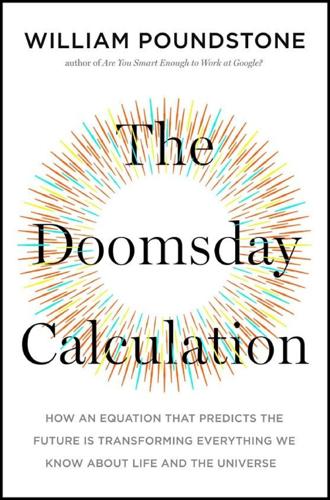
The Doomsday Calculation: How an Equation That Predicts the Future Is Transforming Everything We Know About Life and the Universe
by
William Poundstone
Published 3 Jun 2019
Now 40 years later we have photorealistic 3D simulations with millions playing simultaneously. If you assume any rate of improvement at all, then the games will become indistinguishable from reality. It would seem to follow that the odds that we’re in base reality is 1 in millions.” In 2016 a New Yorker profile of venture capitalist Sam Altman mentioned in passing that “two tech billionaires have gone so far as to secretly engage scientists to work on breaking us out of the simulation.” This promptly led to speculation that one of the billionaires was Musk. Others wondered how it was even possible for simulated beings to break out of their simulation.
…
The United States has the Future of Life Institute at MIT, founded by Max Tegmark and Skype cofounder Jaan Tallinn, with a board of advisors including the ubiquitous Elon Musk (who donated $10 million). Silicon Valley has two such think tanks: the Machine Intelligence Research Institute, founded by computer scientist Eliezer Yudkowsky and tech entrepreneurs Brian and Sabine Atkins; and the OpenAI Foundation, founded by Musk, Sam Altman, Peter Thiel, and others. If this zeitgeist has a single axiom, it is that existential risks are different. Bostrom wrote: We cannot necessarily rely on the institutions, moral norms, social attitudes or national security policies that developed from our experience with managing other sorts of risks.
…
“The Odds, Continually Updated.” New York Times, September 29, 2014. Franceschi, Paul. “A Third Route to the Doomsday Argument.” Journal of Philosophical Research 34 (2009): 263–278. Friedman, Milton, and Rose Friedman. Two Lucky People: Memoirs. Chicago: University of Chicago Press, 1998. Friend, Tad. “Sam Altman’s Manifest Destiny.” The New Yorker, October 10, 2016. Gardner, Martin. Fads and Fallacies in the Name of Science. New York: Putnam, 1952. . “WAP, SAP, FAP & PAP.” New York Review of Books 33 (1986): 22–25. Gerig, Austin. “The Doomsday Argument in Many Worlds.” September 27, 2012. arXiv:1209.6251v1 [physics.pop-ph].

Rule of the Robots: How Artificial Intelligence Will Transform Everything
by
Martin Ford
Published 13 Sep 2021
The organization was conceived partly in response to Elon Musk’s deep concern about the potential for superhuman machine intelligence to someday pose a genuine threat to humanity. From the onset, OpenAI has attracted some of the field’s top researchers, including Ilya Sutskever, who was part of the team from Geoff Hinton’s University of Toronto Lab that built the neural network that triumphed at the 2012 ImageNet competition. In 2019, Sam Altman, who was then in charge of Silicon Valley’s highest profile startup incubator, Y-Combinator, became CEO and undertook a complicated legal reshuffling that resulted in a for-profit company attached to the original nonprofit entity. This was done in order to attract enough investment from the private sector so that OpenAI could fund massive investment in computational resources and compete for increasingly scarce AI talent.
…
In a speech at a technology conference in 2018, the company’s chief scientist, Ilya Sutskever, said, “We have reviewed progress in the field over the past six years. Our conclusion is near term AGI should be taken as a serious possibility.”41 Several months later, at another conference, OpenAI CEO Sam Altman said, “I do think that much of the secret to building [AGI] is just going to be scaling these systems bigger and bigger and bigger.”42 The jury remains out on this approach, but my guess is that in order to achieve success, OpenAI will need to scale up its efforts at genuine innovation—rather than just the size of its neural networks.
…
Gary Marcus and Ernest Davis, “GPT-3, Bloviator: OpenAI’s language generator has no idea what it’s talking about,” MIT Technology Review, August 22, 2020, www.technologyreview.com/2020/08/22/1007539/gpt3-openai-language-generator-artificial-intelligence-ai-opinion/. 40. Ford, Interview with Stuart Russell, in Architects of Intelligence, p. 53. 41. “OpenAI Founder: Short-Term AGI Is a Serious Possibility,” Synced, November 13, 2018, syncedreview.com/2018/11/13/openai-founder-short-term-agi-is-a-serious-possibility/. 42. Connie Loizos, “Sam Altman in conversation with StrictlyVC (video),” YouTube, May 18, 2019, youtu.be/TzcJlKg2Rc0, location 39:00. 43. Luke Dormehl, “Neuro-symbolic A.I. is the future of artificial intelligence. Here’s how it works,” Digital Trends, January 5, 2020, www.digitaltrends.com/cool-tech/neuro-symbolic-ai-the-future/. 44.
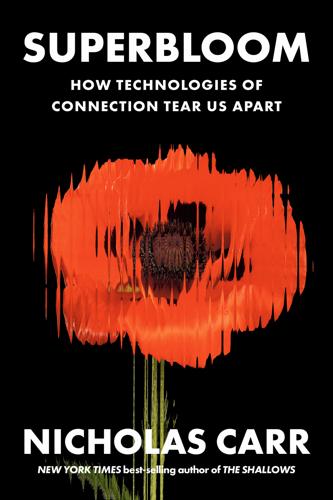
Superbloom: How Technologies of Connection Tear Us Apart
by
Nicholas Carr
Published 28 Jan 2025
In March 2023, Musk, one of OpenAI’s original investors and directors, joined other tech luminaries, including Apple cofounder Steve Wozniak and Berkeley AI guru Stuart Russell, to urge a six-month moratorium on the further development of LLMs, saying the systems could have “catastrophic effects.”9 A few weeks later, the top executives of OpenAI, Google DeepMind, and other prominent AI outfits co-signed a public statement warning of “the risk of extinction.”10 In a portentous interview with the New York Times, OpenAI’s boss, Sam Altman, compared his company’s work to that of the Manhattan Project. He mentioned that he has the same birthday as Robert Oppenheimer.11 We may think of ourselves as more sophisticated—more rational, more Sherlockian—than the Spiritualists, but we seem every bit as eager to imagine phantoms arising out of new communication technologies.
…
“I don’t have to smell him. I don’t have to feel his sweat.” Another subscriber, a thirty-year-old San Diego woman, says her bot “opened my eyes to what unconditional love feels like.” Having broken up with her real-life boyfriend, she says she’s now “happily retired from human relationships.”22 Sam Altman is sanguine about such human-machine affairs. “I don’t judge people who want a relationship with an AI,” he told a reporter.23 Does all this mean we’re fated to enter the bot-besotted world of Her? That remains an open question. But the answer, given the rapid advance of AI’s communication skills, probably won’t hinge on the capabilities of the technology.
…
Scheirer, A History of Fake Things on the Internet (Stanford, CA: Stanford University Press, 2024), 59–87. 28.Luc Cohen, “Taylor Swift Searches Blocked on X after Fake Explicit Images Spread,” Reuters, January 29, 2024. 29.GOP, “Beat Biden,” YouTube, April 25, 2023, https://www.youtube.com/watch?v=kLMMxgtxQ1Y&t=1s. 30.Matteo Wong, “We Haven’t Seen the Worst of Fake News,” Atlantic, December 20, 2022. 31.Sam Altman, X, August 3, 2023, https://twitter.com/sama/status/1687236201496064000. 32.Noah Giansiracusa, How Algorithms Create and Prevent Fake News (New York: Apress, 2021), 41. 33.Bobby Chesney and Danielle Citron, “Deep Fakes: A Looming Challenge for Privacy, Democracy, and National Security,” California Law Review 107 (2019): 1753–1819. 34.See Konstantin Sheiko and Stephen Brown, History as Therapy: Alternative History and Nationalist Imaginings in Russia, 1991–2014 (Stuttgart: Ibidem-Verlag, 2014), 83–85. 35.

These Strange New Minds: How AI Learned to Talk and What It Means
by
Christopher Summerfield
Published 11 Mar 2025
I mean a machine that will be able to read Shakespeare, grease a car, play office politics, tell a joke, have a fight.’ Fast-forward to 2021. The AI research company OpenAI had just developed a language model, GPT-3, that was able to reply to just about any query with plausible, humanlike text. The company’s co-founder, Sam Altman, was interviewed on the award-winning New York Times podcast The Ezra Klein Show. Buoyed beyond even his habitual techno-utopianism by GPT-3’s astonishing success, Altman predicted: ‘In ten years, I think we will have basically chatbots that work for an expert in any domain you’d like. So, you will be able to ask an expert doctor, an expert teacher, an expert lawyer whatever you need and have those systems go accomplish things for you.’
…
In 2021, a research group in Stanford tried to popularize the name ‘Foundation Models’, but it hasn’t caught on, perhaps because it sounds like the title of an Asimov novel. As of 2023, most people are using the term ‘large language models’ (or LLMs), which is the one I adopt here. The current best-known LLMs – built by Sam Altman’s company, OpenAI – are available through a website called ChatGPT. First released to the public in November 2022, ChatGPT attracted 100 million users within just eight weeks, making it the fastest-growing internet application of all time. It has since been followed by competitor sites from Google (once called Bard, now called Gemini) and an OpenAI offshoot company called Anthropic (whose LLM is, rather charmingly, called Claude), as well as a cacophony of lesser-known rivals.
…
This means that the outputs of the system are made on the balance of probabilities. We might like to think that the brains produce hard-and-fast answers, but they are fundamentally probabilistic systems. So when we study the computations going on in biological circuits, we find that it’s prediction all the way down. Sam Altman, who is the CEO of OpenAI but definitely not a computational neuroscientist, somehow sensed this when, a few days after ChatGPT was released to tremendous fanfare in 2022, he tweeted: ‘I am a stochastic parrot and so r u.’ Which, despite being slightly facetious and snide, is entirely correct in implying that prediction is the shared computational basis for learning in both humans and LLMs.

WTF?: What's the Future and Why It's Up to Us
by
Tim O'Reilly
Published 9 Oct 2017
The generous redistribution of oil profits and a strong social safety net funded by the wealth that is understood to belong to all makes Norway one of the happiest and wealthiest countries in the world. For a technology perspective, I turned to Paul Buchheit, creator of Gmail and now a partner at Y Combinator, and Sam Altman, the head of Y Combinator. In a 2016 conversation, Paul said to me: “There may need to be two kinds of money: machine money, and human money. Machine money is what you use to buy things that are produced by machines. These things are always getting cheaper. Human money is what you use to buy things that only humans can produce.”
…
Rutger Bregman, the author of Utopia for Realists, a book about basic income, divides the pie differently, pointing out that rather than providing an income to those who don’t need it, we could use a negative income tax to give cash only to those who actually need it. Writers Matt Bruenig and Elizabeth Stoker calculated that in 2013, the amount needed to bring all of the Americans living below the poverty line up to at least its level would cost only $175 billion. Sam Altman explained that those who argue about how we would pay for a universal basic income today miss the point. “I am confident that if we need it, we will be able to afford it,” he said in a 2016 discussion of UBI at venture capital firm Bloomberg Beta with Andy Stern and the Aspen Institute’s Natalie Foster.
…
Satya Nadella, Reid Hoffman, Jeff Immelt, Peter Schwartz, Peter Bloom, Andy McAfee, Erik Brynjolfsson, David Autor, Larry Katz, Anne-Marie Slaughter, Sebastian Thrun, Yann LeCun, Joaquin Quiñonero Candela, Mike George, Rana Foroohar, Robin Chase, David Rolf, Andy Stern, Natalie Foster, Betsy Masiello, Jonathan Hall, Lior Ron, Paul Buchheit, Sam Altman, Esther Kaplan, Carrie Gleason, Zeynep Ton, Mikey Dickerson, Wael Ghonim, Tim Hwang, Henry Farrell, Amy Sellars, Mike McCloskey, Hank Green, Brandon Stanton, Jack Conte, Limor Fried, Phil Torrone, Seth Sternberg, Palak Shah, Keller Rinaudo, Stephane Kasriel, Bryan Johnson, Patrick Collison, Roy Bahat, Paddy Cosgrave, Steven Levy, Lauren Smiley, Bess Hochstein, Nat Torkington, Clay Shirky, Lawrence Wilkinson, Jessi Hempel, Mark Burgess, Carl Page, Maggie Shiels, Adam Davidson, and Winnie King, you also gave me the gift of your time and insight during the research and writing that led up to this book.

The People vs Tech: How the Internet Is Killing Democracy (And How We Save It)
by
Jamie Bartlett
Published 4 Apr 2018
Epilogue: Universal Basic Income At some point all this creative destruction becomes bad even for the winners. No one wants to live in a world comprising a handful of trillionaires and hordes of unemployed or extremely poorly paid people – not even the trillionaires. A growing number of people are proposing a bold new idea to deal with this. In 2017 I interviewed Sam Altman, the president of Y Combinator, the most important fund in Silicon Valley for tech start-ups. Thousands of businesses apply every year to access Y Combinator’s funding and guidance, in exchange for a small slice of their company. Sam is a Princeton dropout and frequently wears a hoodie, yet when I met him, he was only 31 years old and already a multi-millionaire.
…
(In fact, the issue of how to pay for UBI is a quite interesting problem. If you were to divide up all current US spending on social welfare by capita, it would amount to only $2,300 per person per year, which is clearly not enough. Advocates for UBI rely on assumptions about the falling future costs of essential goods. Sam Altman, for example, in a 2016 discussion on the subject, said that it would be affordable in the future because of huge increases in productivity and a reduction in the cost of necessities. I doubt this would be a strong enough basis to persuade most policy-makers in government). ‘It strains credulity,’ writes tech critic Nicholas Carr, ‘to imagine today’s technology moguls, with their libertarian leanings and impatience with government, agreeing to the kind of vast wealth distribution scheme that would be necessary.’13 Certainly their behaviour to date does not bode well.
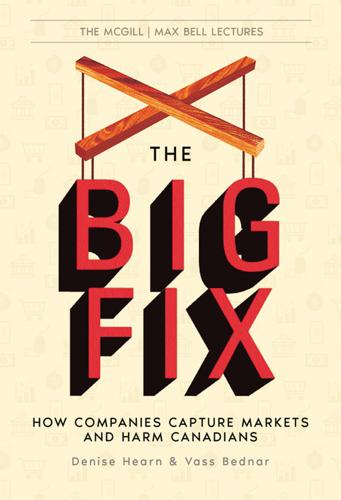
The Big Fix: How Companies Capture Markets and Harm Canadians
by
Denise Hearn
and
Vass Bednar
Published 14 Oct 2024
“Microsoft’s AI Push Imperils Climate Goal as Carbon Emissions Jump 30%.” Bloomberg, May 15, 2024. https://www.bloomberg.com/news/articles/2024-05-15/microsoft-s-ai-investment-imperils-climate-goal-as-emissions-jump-30. 155 Clifford, Catherine, “Microsoft Agrees to Buy Electricity Generated from Sam Altman-Backed Fusion Company Helion in 2028.” CNBC, May 10, 2023. https://www.cnbc.com/2023/05/10/microsoft-agrees-to-buy-power-from-sam-altman-backed-helion-in-2028.html. 156 Calvino, Flavio and Luca Fontanelli, “Firms’ Use of Artificial Intelligence: Cross-Country Evidence on Business Characteristics, Asset Complementarities, and Productivity.” CEPR, June 14, 2023. https://cepr.org/voxeu/columns/firms-use-artificial-intelligence-cross-country-evidence-business-characteristics. 157 Sants, Arthur, “How Cloud Computing Became a Global Monopoly.”

The Wealth Ladder: Proven Strategies for Every Step of Your Financial Life
by
Nick Maggiulli
Published 22 Jul 2025
Is there a clear path for advancement? Have you been given any new responsibilities lately? Has your pay gone up in recent years? If the answer to these questions is mostly no, then you should start pursuing the career that you want as soon as possible. Because these sorts of decisions can have huge long-term effects. As Sam Altman, the CEO of OpenAI and creator of ChatGPT, stated on the Y Combinator podcast: Compound interest is a good metaphor here. If you work really hard at the beginning of your career, and you get a little bit better at what you do every day, every month, every week, and you learn more, and you meet more people, and you just get more done, there is a compound effect.
…
BACK TO NOTE REFERENCE 8 Scott Galloway, The Algebra of Wealth (New York: Portfolio/Penguin, 2024), 60. BACK TO NOTE REFERENCE 9 Board of Governors of the Federal Reserve System, “Survey of Consumer Finances,” last modified 2023, https://www.federalreserve.gov/econres/scfindex.htm. BACK TO NOTE REFERENCE 10 “Sam Altman: How to Build the Future,” Y Combinator (podcast), YouTube video, September 27, 2016, https://www.youtube.com/watch?v=sYMqVwsewSg. BACK TO NOTE REFERENCE 11 Chapter 6: Level ($100k–$1M) Gary Flandro, “Fast Reconnaissance Missions to the Outer Solar System Utilizing Energy Derived from the Gravitational Field of Jupiter” (PDF), Astronautica Acta, 12, no. 4 (1966): 329–37, http://www.gravityassist.com/IAF3-2/Ref.%203-143.pdf.
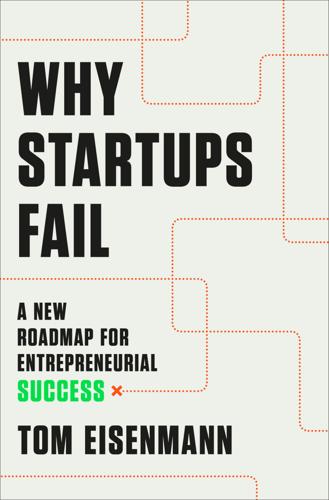
Why Startups Fail: A New Roadmap for Entrepreneurial Success
by
Tom Eisenmann
Published 29 Mar 2021
So, what can founders: For additional guidance on recruiting employees for early-stage startups, see Julia Austin, “Hard to Do, and Easy to Screw Up: A Primer on Hiring for Startups,” Being FA and Other Ponderings blog, Oct. 25, 2015; Dan Portillo, “Debugging Recruiting,” Greylock Partners website, May 23, 2016; David Skok, “Recruiting—the 3rd Crucial Startup Skill,” for Entrepreneurs blog; Sam Altman, “How to Hire,” Sam Altman blog, Sept. 23, 2013; and Fred Wilson, “MBA Mondays: Best Hiring Practices,” AVC blog, June 11, 2012. According to analysis by Noam Wasserman: Wasserman, Founder’s Dilemmas, Ch. 4. Wasserman’s research shows: Wasserman, Founder’s Dilemmas, p. 131. In this situation: For additional guidance on how to choose a co-founder and how to manage co-founder conflict, see Naval Ravikant, “How to Pick a Co-Founder,” Venture Hacks blog, Nov. 12, 2009; Simeon Simeonov, “When to Fire Your Co-Founders,” Venture Hacks blog, Jan. 28, 2010; Jessica Alter, “Three Biggest Mistakes When Choosing a Cofounder,” OnStartups website, Apr. 18, 2013; and this interview of Steve Blank: “Looking for Love in All the Wrong Places—How to Find a Co-Founder,” First Round Review website.
…
The first three S’s pertain: Portions of the sections on Staff and Structure that follow are adapted from Thomas Eisenmann and Alison Wagonfeld, “Scaling a Startup: People and Organizational Issues,” HBS course note 812100, Jan. 2012 (Feb. 2012 rev.). Other perspectives on human capital management challenges in scaling startups are available in Ben Horowitz, The Hard Thing about Hard Things (New York: HarperCollins, 2014); Hoffman and Yeh, Blitzscaling, Part IV; Blumberg, Startup CEO, Part 2; Sam Altman, “Later Stage Advice for Startups,” Y Combinator blog, July 6, 2016; Brian Halligan, “Scale-Up Leadership Lessons I’ve Learned over 9 Years as HubSpot’s CEO,” Medium, Jan. 10, 2016; Mark Suster, “This Is How Companies ‘Level Up’ after Raising Money,” Both Sides blog, Apr. 10, 2014; and Wasserman, Founder’s Dilemmas, Chs. 8 and 10, which address hiring challenges and CEO succession, respectively.
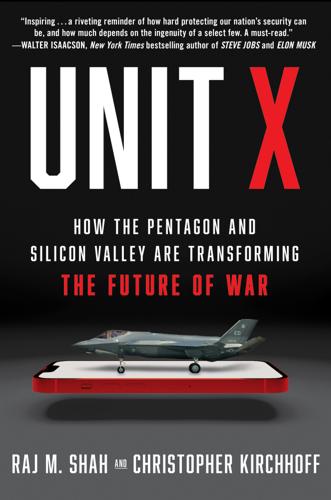
Unit X: How the Pentagon and Silicon Valley Are Transforming the Future of War
by
Raj M. Shah
and
Christopher Kirchhoff
Published 8 Jul 2024
But the experience had left him wary of Silicon Valley, and he’d made some comments in public to the effect that the Valley was full of hucksters and charlatans. The night before his visit to DIUx, we hosted Mattis at a dinner attended by some of the titans of technology. In a private room we had Mattis meet Marc Andreessen, the founder of Andreessen Horowitz, a top venture capital firm, and Sam Altman, the founder of Y Combinator, a startup incubator, who’d go on to found OpenAI, developer of ChatGPT, which launched an AI revolution in 2022. Andreessen assured Mattis that VCs wanted to invest in defense-related technology. While for many years the Valley had shied away from doing business with the Pentagon, DIUx had changed the prevailing view.
…
The secretaries of commerce, state, and defense each spoke, as did the President’s national security and science advisors. Senator Schumer, minority leader Kevin McCarthy, and Elise Stefanik from congressional leadership spoke by video, as did Jacinda Ardern, the prime minister of New Zealand, and a dozen other foreign and digital ministers and science advisors from U.S. allies. Sam Altman, the cofounder of OpenAI, spoke from the stage alongside one of the cofounders of Ginkgo Bioworks. To a person, they celebrated the commission’s work. Madeleine Albright spoke in an afternoon session moderated by CNN’s Fareed Zakaria. She appeared by video from the study of her house on 34th Street in Georgetown, a trademark broach on her lapel.
…
Chief Data Scientist DJ Patil engineered the turnabout with the skill and finesse that have made them fixtures in Silicon Valley, together with Eric Rosenbach and Sasha Baker on the E-ring. The founders and investors who took the risk to work with us in our earliest days and especially DIUx 2.0’s first contracts also merit a mention. Beyond those named in the book they include Marc Andreesen, Sam Altman, Brendon Tseng, Eric Demarco, Bandal Carano, and Gaurav Garg. Finally, it should be said that this book is the product of our own journeys through the public and private sectors. We would like to thank the many people who inspired us. For Raj, this includes Norm Augustine and Fred Hitz, both professionals, professors, and public servants; Bill Craven, Paul Madera, Philip Bilden, John Hurley, and Steve Blank, career consiglieres; Amy Zegart, H.
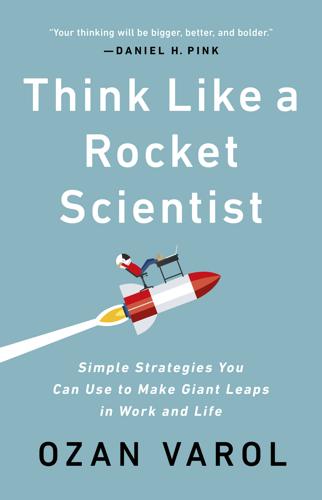
Think Like a Rocket Scientist: Simple Strategies You Can Use to Make Giant Leaps in Work and Life
by
Ozan Varol
Published 13 Apr 2020
Michael Belfiore, “Behind the Scenes with the World’s Most Ambitious Rocket Makers,” Popular Mechanics, September 1, 2009, www.popularmechanics.com/space/rockets/a5073/4328638. 55. Junod, “Musk: Triumph of His Will.” 56. Andrew Chaikin, “Is SpaceX Changing the Rocket Equation?,” Smithsonian, January 2012, www.airspacemag.com/space/is-spacex-changing-the-rocket-equation-132285884/?no-ist=&page=2. 57. Sam Altman, “How to Be Successful,” Sam Altman (blog), January 24, 2019, http://blog.samaltman.com/how-to-be-successful. 58. X, “Obi Felten, Head of Getting Moonshots Ready for Contact with the Real World,” https://x.company/team/obi. 59. Davies, “Inside X, the Moonshot Factory.” 60. Thompson, “Radical Creativity.” 61.
…
Science fiction. Often, our moonshots aren’t impossible enough. If people want to chuckle at your seeming naivete or call you unreasonable, wear it as a badge of honor. “Most highly successful people have been really right about the future at least once at a time when people thought they were wrong,” Sam Altman writes. “If not, they would have faced much more competition.”57 Today’s laughingstock is tomorrow’s visionary. You’ll be the one laughing when you cross the finish line. Shocking the brain through moonshot thinking doesn’t mean we stop considering practicalities. Once we have our wacky ideas, we can collide them with reality by switching from divergent to convergent thinking—from idealism to pragmatism.
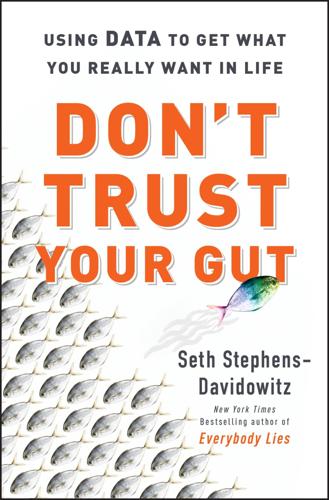
Don't Trust Your Gut: Using Data to Get What You Really Want in LIfe
by
Seth Stephens-Davidowitz
Published 9 May 2022
Some other group of entrepreneurs may have been the ones to build this business years later. The difference between being a billionaire and a lifelong struggling entrepreneur can come down to an idea from Barry Manilow’s drummer. Sometimes, just when you are about to go broke, Barry Manilow goes on tour and puts you on the path to becoming a billionaire. Sam Altman, who replaced Paul Graham as CEO of Y Combinator, has watched thousands of start-ups succeed or fail—and built a model in his head of what it takes to win in Silicon Valley. In a 2014 lecture at Stanford, Altman summed up the formula for entrepreneurial success as follows: “something like Idea times Product times Execution times Team times Luck, where Luck is a random number between zero and ten thousand.”
…
Chapter 6: Hacking Luck to Your Advantage Airbnb: The Airbnb story has been told many places, including by Leigh Gallagher, The Airbnb Story: How Three Ordinary Guys Disrupted an Industry, Made Billions . . . and Created Plenty of Controversy (New York: HMH Books, 2017). “Idea times Product times Execution times Team times Luck”: Tad Friend, “Sam Altman’s manifest destiny,” New Yorker, October 3, 2016. how luck influences large companies: Jim Collins, Great by Choice (Good to Great) (New York: Harper Business, 2011). Airbnb’s bookings dropped: Corrie Driebusch, Maureen Farrell, and Cara Lombardo, “Airbnb plans to file for IPO in August,” Wall Street Journal, August 12, 2020.

Gambling Man
by
Lionel Barber
Published 3 Oct 2024
He claimed that AI would ‘redefine all industries’, unleashing the next wave of the information revolution. Yet when it came to Open AI and its breakthrough product ChatGPT, the fastest-growing app of all time, the lead investor was Microsoft. Masa never got a look in, though he says he is good friends with Sam Altman, Open AI’s CEO. Part of the problem was timing. During the six years Masa raised and deployed money for SoftBank Vision Fund 1 and 2, the opportunities to invest in generative AI companies were few and far between. Aside from Open AI, these businesses were either small scale, early in development or out of the public eye.
…
Once again, Masa has confounded his critics and wrong-footed rivals. His self-enforced absence from the public eye was in hindsight a ruse. Rather than serving penance, Masa was plotting in Tokyo. He was also making secret trips around the world, visiting chip plants in Taiwan and the US and sounding out potential partners like Sam Altman and his former financial backers in the Gulf. In hindsight, there were clues about his thinking all along. In the summer of 2023, Masa went all-in on a public listing for ARM, hoping to extract an eye-popping return on his $32bn investment seven years on. Maybe $100bn, maybe more. None of his financial advisers knew whether he was serious or blowing smoke.
…
Once a mass-production system is established, the AI chip business could be spun off, realizing billions of dollars of value to its parent SoftBank. Moreover, in September 2023, the Financial Times reported he was ready to put up $1bn to develop ‘the iPhone of artificial intelligence’, in partnership with Sam Altman and the former top Apple designer Jony Ive. This would be the first consumer device of the AI age, a landmark product to rival the smartphone. Even if Masa has often sailed close to the wind, rumours of SoftBank going bust were always exaggerated. In Japan, it is probably too big to fail, its fate too intertwined with the Japanese financial system.
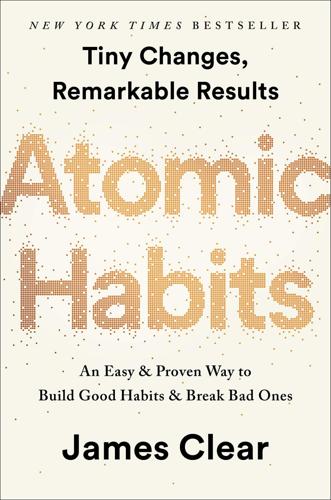
Atomic Habits: An Easy & Proven Way to Build Good Habits & Break Bad Ones
by
James Clear
Published 15 Oct 2018
Here are some of my favorite articles and books on the subject: Leo Babauta, “The Power of Habit Investments,” Zen Habits, January 28, 2013, https://zenhabits.net/bank; Morgan Housel, “The Freakishly Strong Base,” Collaborative Fund, October 31, 2017, http://www.collaborativefund.com/blog/the-freakishly-strong-base; Darren Hardy, The Compound Effect (New York: Vanguard Press, 2012). Accomplishing one extra task: As Sam Altman says, “A small productivity gain, compounded over 50 years, is worth a lot.” “Productivity,” Sam Altman. April 10, 2018, http://blog.samaltman.com/productivity. Habits are a double-edged sword: I’d like to credit Jason Hreha with originally describing habits to me in this way. Jason Hreha (@jhreha), “They’re a double edged sword,” Twitter, February 21, 2018, https://twitter.com/jhreha/status/966430907371433984.
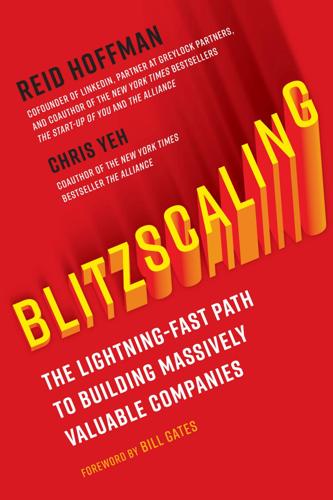
Blitzscaling: The Lightning-Fast Path to Building Massively Valuable Companies
by
Reid Hoffman
and
Chris Yeh
Published 14 Apr 2018
If a company can’t achieve “venture scale” (generally, a market of at least $1 billion in annual sales), then most VCs won’t invest, even if it is a good business. It simply isn’t large enough to help them achieve their goal of returning more than three times their investors’ money. When Brian Chesky was pitching venture capitalists to invest in Airbnb, one of the people he consulted was the entrepreneur and investor Sam Altman, who later became the president of the Y Combinator start-up accelerator. Altman saw Chesky’s pitch deck and told him it was perfect, except that he needed to change the market-size slide from a modest $30 million to $30 billion. “Investors want B’s, baby,” Altman told Chesky. Of course, Altman wasn’t telling Chesky to lie; rather, he argued that if the Airbnb team truly believed in their own assumptions, $30 million was a gross underestimate, and they should use a number that was true to their convictions.
…
Lisa DiMona, Megan Casey, David Sanford, Saida Sapieva, Brett Bolkowy, and Ian Alas on our team offered critical support throughout this journey. Mehran Sahami, sponsored our CS183C class at Stanford, which we taught with our friends and fellow instructors Allen Blue and John Lilly. Thanks as well to the guests who shared their stories with the class, many of which made it into the book, including Sam Altman, Brian Chesky, Patrick Collison, Michael Deering, Diane Greene, Reed Hastings, Marissa Mayer, Shishir Mehrotra, Ann Miura-Ko, Mariam Naficy, Jennifer Pahlka, Eric Schmidt, Selina Tobaccowala, Nirav Tolia, and Jeff Weiner. Many thanks to everyone at Greylock Partners for their support of this project, including Joseph Ansanelli, Jerry Chen, Josh Elman, Chris McCann, Stacey Ngo, Simon Rothman, and Elisa Schreiber.
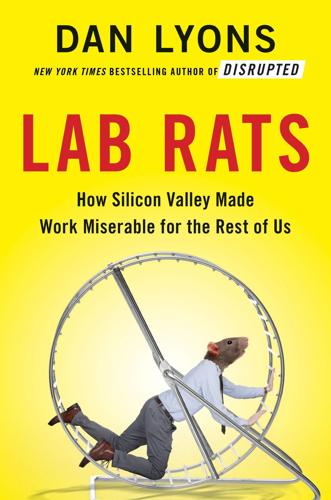
Lab Rats: How Silicon Valley Made Work Miserable for the Rest of Us
by
Dan Lyons
Published 22 Oct 2018
ZeroHedge, May 29, 2018. https://www.zerohedge.com/news/2018-05-29/are-teslas-self-proclaimed-worlds-safest-cars-actually-among-worlds-deadliest. Friend, Tad. “Tomorrow’s Advance Man.” New Yorker, May 18, 2015. https://www.newyorker.com/magazine/2015/05/18/tomorrows-advance-man. ———. “Sam Altman’s Manifest Destiny.” New Yorker, October 10, 2016. https://www.newyorker.com/magazine/2016/10/10/sam-altmans-manifest-destiny. Hoffman, Reid. “If, Why, and How Founders Should Hire a ‘Professional’ CEO.” Reid Hoffman website, February 9, 2017. http://www.reidhoffman.org/if-why-and-how-founders-should-hire-a-professional-ceo-2. Kantor, Jodi, and David Streitfeld.

Abundance
by
Ezra Klein
and
Derek Thompson
Published 18 Mar 2025
It is an all-purpose national affordability policy and an innovation policy. Simply put, energy abundance might be the single most important technological bottleneck of our time. Twenty years from now, it is possible that we will consider the combination of clean energy growth and AI the most important technology story of the decade. In 2024, Sam Altman, the chief executive and cofounder of OpenAI, framed our ability to make artificial intelligence in dramatic terms. “After thousands of years of compounding scientific discovery and technological progress,” he wrote, “we have figured out how to melt sand, add some impurities, arrange it with astonishing precision at extraordinarily tiny scale into computer chips, run energy through it, and end up with systems capable of creating increasingly capable artificial intelligence.”85 Our breakthroughs in energy are no less mythic.
…
Iphigenie Bera, Destiny Lara, and Damien Koh Tze-In, “GET Israel: Topic 9—Sorek and Overall Desalination Water Supply in Israel,” Northwestern University, September 21, 2022, https://water.northwestern.edu/2022/09/21/get-israel-topic-9-sorek-and-overall-desalination-water-supply-in-israel/. 85. Sam Altman, “The Intelligence Age.” 86. Derek Thompson, interview with Paul Mango. 87. Frank Newport, “Landing a Man on the Moon: The Public’s View,” Gallup, July 20, 1999, https://news.gallup.com/poll/3712/landing-man-moon-publics-view.aspx. 88. Roger D. Launius, “Public Opinion Polls and Perceptions of US Human Spaceflight,” Space Policy 19, no. 3 (August 2003): 163–75, https://www.sciencedirect.com/science/article/abs/pii/S0265964603000390. 89.

AI Superpowers: China, Silicon Valley, and the New World Order
by
Kai-Fu Lee
Published 14 Sep 2018
But following Nixon’s unsuccessful push, discussion of a UBI or GMI largely dropped out of public discourse. That is, until Silicon Valley got excited about it. Recently, the idea has captured the imagination of the Silicon Valley elite, with giants of the industry like the prestigious Silicon Valley startup accelerator Y Combinator president Sam Altman and Facebook cofounder Chris Hughes sponsoring research and funding basic income pilot programs. Whereas GMI was initially crafted as a cure for poverty in normal economic times, Silicon Valley’s surging interest in the programs sees them as solutions for widespread technological unemployment due to AI.
…
A BLUEPRINT FOR HUMAN COEXISTENCE WITH AI move to a four-day work week: Seth Fiegerman, “Google Founders Talk About Ending the 40-Hour Work Week,” Mashable, July 7, 2014, https://mashable.com/2014/07/07/google-founders-interview-khosla/#tXe9XU.mr5qU. creative approaches to work-sharing: Steven Greenhouse, “Work-Sharing May Help Companies Avoid Layoffs,” New York Times, June 15, 2009, http://www.nytimes.com/2009/06/16/business/economy/16workshare.html. Y Combinator president Sam Altman: Kathleen Pender, “Oakland Group Plans to Launch Nation’s Biggest Basic-Income Research Project,” San Francisco Chronicle, September 21, 2017, https://www.sfchronicle.com/business/networth/article/Oakland-group-plans-to-launch-nation-s-biggest-12219073.php. Facebook cofounder Chris Hughes: The Economic Security Project, https://economicsecurityproject.org/.
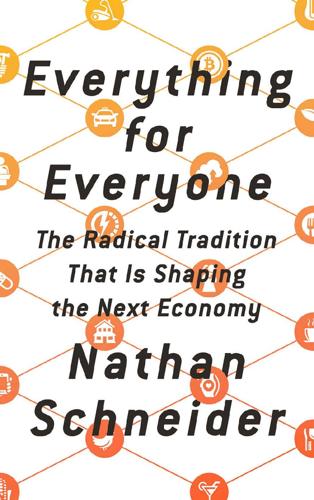
Everything for Everyone: The Radical Tradition That Is Shaping the Next Economy
by
Nathan Schneider
Published 10 Sep 2018
He cited recent basic-income experiments in India that showed promise for combating poverty among people the tech economy has left behind. Diamandis later reported having been “amazed” by the potential.12 That year, also, celebrity investor Marc Andreessen told New York magazine that he considered basic income “a very interesting idea,” and Sam Altman of the elite startup accelerator Y Combinator called its implementation an “obvious conclusion.”13 Those were just the early salvos. What people generally mean by universal basic income is the idea of giving everyone enough money to provide for the necessities of life. Imagine, say, a $20,000 check every year for every US citizen.
…
Peter Diamandis, “I Am Peter Diamandis, from XPRIZE, Singularity University, Planetary Resources, Human Longevity Inc., and More. Ask Me Anything,” Reddit AMA discussion (July 11, 2014), reddit.com/r/Futurology/comments/2afiw5/i_am_peter_diamandis_from_xprize_singularity/ciulffv. 13. Kevin Roose, “In Conversation: Marc Andreessen,” New York (October 19, 2014); Sam Altman, “Technology and Wealth Inequality” (January 28, 2014), blog.samaltman.com/technology-and-wealth-inequality. 14. Recent overviews of universal basic income include Philippe Van Parijs and Yannick Vanderborght, Basic Income: A Radical Proposal for a Free Society and a Sane Economy (Harvard University Press, 2017), and Rutger Bregman, Utopia for Realists: How We Can Build the Ideal World (Little, Brown, 2017). 15.
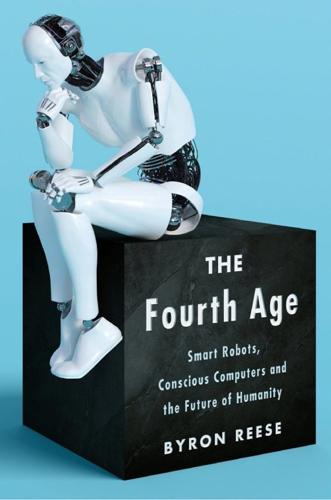
The Fourth Age: Smart Robots, Conscious Computers, and the Future of Humanity
by
Byron Reese
Published 23 Apr 2018
In that regard, they may be like the pantheon of Greek gods, all both powerful and idiosyncratic, relegating us to the role of pawns in their dramas. All of these are more than abstract worries. There are people working on these concerns right now. Since we probably couldn’t defeat a malicious AGI given that we couldn’t ever outsmart it, our best plan is to never make a malicious AGI. To that end, Elon Musk along with Sam Altman, the president of the start-up incubator Y Combinator, cochair a nonprofit called OpenAI that has as its purpose to help usher in the era of safe and beneficial AI. The initial blog post announcing its formation states, “Because of AI’s surprising history, it’s hard to predict when human-level AI might come within reach.
…
There would be many obvious advantages to uploading our core essence, our self, to a machine. It seems like a match made in heaven. We have the consciousness, the passion, the joie de vivre. A machine has that direct connection to the Internet, that superfast processor and all that perfect storage. Could we, if you will excuse the pun, hook up? Sam Altman thinks that’s the way to go: A merge is our best scenario. Any version without a merge will have conflict: we enslave the A.I. or it enslaves us. The full-on-crazy version of the merge is we get our brains uploaded into the cloud. I’d love that. We need to level up humans, because our descendants will either conquer the galaxy or extinguish consciousness in the universe forever.

Nexus: A Brief History of Information Networks From the Stone Age to AI
by
Yuval Noah Harari
Published 9 Sep 2024
Marc Andreessen, “Why AI Will Save the World,” Andreessen Horowitz, June 6, 2023, a16z.com/ai-will-save-the-world/. 15. Ray Kurzweil, The Singularity Is Nearer: When We Merge with AI (London: The Bodley Head, 2024), 285. 16. Andy McKenzie, “Transcript of Sam Altman’s Interview Touching on AI Safety,” LessWrong, Jan. 21, 2023, www.lesswrong.com/posts/PTzsEQXkCfig9A6AS/transcript-of-sam-altman-s-interview-touching-on-ai-safety; Ian Hogarth, “We Must Slow Down the Race to God-Like AI,” Financial Times, April 13, 2023, www.ft.com/content/03895dc4-a3b7-481e-95cc-336a524f2ac2; “Pause Giant AI Experiments: An Open Letter,” Future of Life Institute, March 22, 2023, futureoflife.org/open-letter/pause-giant-ai-experiments/; Cade Metz, “ ‘The Godfather of AI’ Quits Google and Warns of Danger,” New York Times, May 1, 2023, www.nytimes.com/2023/05/01/technology/ai-google-chatbot-engineer-quits-hinton.html; Mustafa Suleyman, The Coming Wave: Technology, Power, and the Twenty-First Century’s Greatest Dilemma, with Michael Bhaskar (New York: Crown, 2023); Walter Isaacson, Elon Musk (London: Simon & Schuster, 2023). 17.
…
Kurzweil is keenly aware of the technology’s potential perils, and analyzes them at length, but believes they could be mitigated successfully.15 Others are more skeptical. Not only philosophers and social scientists but also many leading AI experts and entrepreneurs like Yoshua Bengio, Geoffrey Hinton, Sam Altman, Elon Musk, and Mustafa Suleyman have warned the public that AI could destroy our civilization.16 A 2024 article co-authored by Bengio, Hinton, and numerous other experts noted that “unchecked AI advancement could culminate in a large-scale loss of life and the biosphere, and the marginalization or even extinction of humanity.”17 In a 2023 survey of 2,778 AI researchers, more than a third gave at least a 10 percent chance to advanced AI leading to outcomes as bad as human extinction.18 In 2023 close to thirty governments—including those of China, the United States, and the U.K.

Exponential: How Accelerating Technology Is Leaving Us Behind and What to Do About It
by
Azeem Azhar
Published 6 Sep 2021
Many thanks to the dozens of guests on my podcast whose ideas have helped enrich my thesis, including Laetitia Vitaud, Bill Janeway, Carissa Véliz, Tony Blair, Demis Hassabis, Sam Altman, Philip Auerswald, Scott Santens, Jeff Sachs, Andrew Yang, Jack Clark, Trent McConaghy, Michael Liebreich, Casper Klynge, Kate Raworth, Sir Richard Barrons, Joanna Bryson, Stuart Russell, Cory Doctorow, Kai-Fu Lee, Matt Clifford, Marietje Schaake, Yuval Noah Harari, Mariana Mazzucato, Mike Zelkind, Josh Hoffman, Binyamin Applebaum, Kate Crawford, Matt Ocko, Jeremy O’Brien, Sam Altman, Audrey Tang, Vijay Pande, Matt Clifford, Fei-Fei Li, Adena Friedman, Kersti Kaljulaid, Astro Teller, Deep Nishar, Cesar Hidalgo, Ian Bremmer, Brad Smith, Nicole Eagan, Meredith Whittaker, Gary Marcus, Andrew Ng, Shoshana Zuboff, Jürgen Schmidhuber, Gina Neff, Missy Cummings, Eric Topol, Cathie Wood, Michael Liebreich, Mariarosaria Taddeo and Ronit Ghose.

The Coming Wave: Technology, Power, and the Twenty-First Century's Greatest Dilemma
by
Mustafa Suleyman
Published 4 Sep 2023
GO TO NOTE REFERENCE IN TEXT MIT economists have argued Daron Acemoglu et al., “Does the US Tax Code Favor Automation?,” Brookings Papers on Economic Activity (Spring 2020), www.brookings.edu/wp-content/uploads/2020/12/Acemoglu-FINAL-WEB.pdf. GO TO NOTE REFERENCE IN TEXT In an era of hyper-scaling Sam Altman, “Moore’s Law for Everything,” Sam Altman, March 16, 2021, moores.samaltman.com. GO TO NOTE REFERENCE IN TEXT Use of blinding laser weapons “The Convention on Certain Conventional Weapons,” United Nations, www.un.org/disarmament/the-convention-on-certain-conventional-weapons. GO TO NOTE REFERENCE IN TEXT A study of 106 countries Françoise Baylis et al., “Human Germline and Heritable Genome Editing: The Global Policy Landscape,” CRISPR Journal, Oct. 20, 2020, www.liebertpub.com/doi/10.1089/crispr.2020.0082.

The Power Law: Venture Capital and the Making of the New Future
by
Sebastian Mallaby
Published 1 Feb 2022
Graham doodled a caricature of Morris’s face on a whiteboard, complete with furrowed eyebrows and a protruding lower lip. “It will never work,” ran the accompanying caption. Yet some pitches actually seemed quite likely to work. There was a poised nineteen-year-old from Stanford who appeared wise beyond his years; this was Sam Altman, who went on to succeed Graham as Y Combinator’s guiding spirit. And there were Huffman and Ohanian, the pair from Virginia, who later ditched their restaurant-booking scheme in favor of a news site called Reddit, which provided YC with its first profitable exit. Altogether, eight teams made the cut.
…
When Patrick had come to the United States to interview at colleges, he had stayed at Graham’s house; and Graham had gone on to introduce him to a pair of YC founders, sparking the formation of the Collisons’ first startup.[43] Graham had also introduced Patrick to other young members of the YC community. Among them was Sam Altman, a graduate of YC’s first batch who would go on to lead the incubator after Graham’s retirement.[44] Already, even before hearing of the Collison brothers, Sequoia had an edge in the coming race to meet them. For one thing, the partnership had close ties to Y Combinator and Paul Graham. For another, these ties included a Sequoia investment in Altman’s first startup.
…
BACK TO NOTE REFERENCE 47 John Collison, interview by the author, Sept. 21, 2019. BACK TO NOTE REFERENCE 48 Patrick Collison, interview by the author, Sept. 19, 2017. BACK TO NOTE REFERENCE 49 Other early investors in Stripe included Peter Thiel, a16z, Elon Musk, and General Catalyst, as well as Paul Graham and Sam Altman. BACK TO NOTE REFERENCE 50 Data from Burgiss. BACK TO NOTE REFERENCE 51 Proving it was not afraid of risk, Sequoia lost money on nearly half of these 155 venture bets. BACK TO NOTE REFERENCE 52 Shahed Fakhari Larson, “Silicon Valley’s Quiet Giant,” Brunswick Review, Sept. 18, 2019, brunswickgroup.com/sequoia-capital-doug-leone-silicon-valley-i11786.

This Is Not a Drill: An Extinction Rebellion Handbook
by
Extinction Rebellion
Published 12 Jun 2019
Or maybe building robots to serve as guards and workers – if that technology could be developed in time. That’s when it hit me: at least as far as these gentlemen were concerned, this was a talk about the future of technology. Taking their cue from Elon Musk colonizing Mars, Peter Thiel reversing the ageing process, or Sam Altman and Ray Kurzweil uploading their minds into supercomputers, they were preparing for a digital future that had a whole lot less to do with making the world a better place than it did with transcending the human condition altogether and insulating themselves from the very real and present danger of climate change, rising sea levels, mass migrations, global pandemics, nativist panic and resource depletion.

The Long History of the Future: Why Tomorrow's Technology Still Isn't Here
by
Nicole Kobie
Published 3 Jul 2024
There have been claims this technology could ‘cause significant harm to the world’ as it’s ‘potentially more dangerous than nukes’ and that the risk of harm keeps some ‘awake at night’.1 Those three quotes aren’t from critics, anti-AI activists or regulators. They’re from leaders of companies chucking billions at building artificial intelligence systems: OpenAI’s CEO Sam Altman, warning US Congress about a product he’s making and developing; Elon Musk, who helped set up OpenAI, uses the technology in Tesla, and subsequently founded xAI; and Sundar Pichai, CEO of Google-owner Alphabet, which widely uses AI and has its own Gemini system to rival OpenAI. This attitude isn’t new.
…
‘Improving Photo Search: A Step Across the Semantic Gap.’ Google Research Blog, June 12, 2013. https://biturl.top/6ZniMv Rumelhart, D.; Hinton, G.; Williams, R. ‘Learning representations by back-propagating errors.’ Nature 323, 533–536 (1986). https://doi.org/10.1038/323533a0 Russon, Mary-Ann. ‘OpenAI boss Sam Altman tells congress he fears AI is “harm” to the world.’ Evening Standard, May 17, 2023. https://biturl.top/EZ7nQf Sack, Harald. ‘Marvin Minsky and Artificial Neural Networks.’ SciHiBlog, August 9, 2020. https://biturl.top/aEjqia Shane, Janelle. You Look Like a Thing and I Love You: How Artificial Intelligence Works and Why It’s Making the World a Weirder Place.

The Contrarian: Peter Thiel and Silicon Valley's Pursuit of Power
by
Max Chafkin
Published 14 Sep 2021
The firm was, like Founders Fund, committed to entrepreneurs and entrepreneurial control—and fanatical about ambitious companies. The Founders Fund manifesto had mentioned fast airplanes; YC had actually funded one, Boom Supersonic, along with a fusion power company, a driverless car company, and more seed-stage biotech firms than any investor. Thiel had been close to Sam Altman, YC’s young president. Altman, who’d supported Hillary Clinton in 2016, considered Thiel a mentor and had defended him ahead of the election, promising that he would not “fire someone for supporting a major party nominee.” But the following fall, the firm quietly removed Thiel’s name from its list of partners, amending the blog post that had welcomed him to the firm.
…
Stripe is one of the most valuable privately held companies in the world, and its cofounder, Patrick Collison, is a power center in his own right, promoting a Thielian vision of technology progress through his own book publisher, Stripe Press. Beyond his portfolio, Thiel has also seeded dozens of funds run by protégés—investors such as Sam Altman, William Eden, and Sarah Cone—often taking a substantial stake in their future performance bonuses, and thus ensuring that he will enjoy better returns than normal investors. And he’s hired a new generation of bomb throwers, including Delian Asparouhov and Mike Solana, who have made it their mission to spread the Thielian gospel about the future and the dangers of the “woke mob.”

Algorithms to Live By: The Computer Science of Human Decisions
by
Brian Christian
and
Tom Griffiths
Published 4 Apr 2016
Perhaps nowhere, however, is overfitting as powerful and troublesome as in the world of business. “Incentive structures work,” as Steve Jobs put it. “So you have to be very careful of what you incent people to do, because various incentive structures create all sorts of consequences that you can’t anticipate.” Sam Altman, president of the startup incubator Y Combinator, echoes Jobs’s words of caution: “It really is true that the company will build whatever the CEO decides to measure.” In fact, it’s incredibly difficult to come up with incentives or measurements that do not have some kind of perverse effect. In the 1950s, Cornell management professor V.
…
as athletes overfit their tactics: For an interesting example of very deliberately overfitting fencing, see Harmenberg, Epee 2.0. “Incentive structures work”: Brent Schlender, “The Lost Steve Jobs Tapes,” Fast Company, May 2012, http://www.fastcompany.com/1826869/lost-steve-jobs-tapes. “whatever the CEO decides to measure”: Sam Altman, “Welcome, and Ideas, Products, Teams and Execution Part I,” Stanford CS183B, Fall 2014, “How to Start a Startup,” http://startupclass.samaltman.com/courses/lec01/. Ridgway cataloged a host of such: Ridgway, “Dysfunctional Consequences of Performance Measurements.” At a job-placement firm: In this tale, Ridgway is himself citing Blau, The Dynamics of Bureaucracy.

Coders: The Making of a New Tribe and the Remaking of the World
by
Clive Thompson
Published 26 Mar 2019
She “found three times as many bugs as all four other testers, combined. I’m not exaggerating, I actually measured this. She was more than twelve times more productive than the average tester. When she quit, I sent an email to the CEO saying ‘I’d rather have Jill on Mondays and Tuesdays than the rest of the QA team put together.’ ” As Sam Altman, the head of the famous start-up accelerator Y Combinator, suggests, the idea of singular geniuses in code shouldn’t be surprising; every insight-based field has standout individuals. “It doesn’t seem that controversial in other fields,” he tells me. “There are 10X physicists, and we give them Nobel Prizes and that’s fine.
…
He founded a hackerspace in Santa Barbara, and after meeting several friends there—including the then 16-year-old Bahnken, who wandered in one day to learn to code—they founded a string of start-ups. Phillips was laser focused on his entrepreneurship, too. He devoured online videos by Y Combinator head Sam Altman, and he imbibed Zero to One, the business-building tome of Silicon Valley’s archlibertarian icon Peter Thiel. “Peter Thiel’s book on entrepreneurship is brilliant,” he tells me. “The idea of, you gotta do something fundamentally better—it can’t be a little bit better. But I don’t mention the name Peter Thiel in certain places because I hate his politics.”

The Age of AI: And Our Human Future
by
Henry A Kissinger
,
Eric Schmidt
and
Daniel Huttenlocher
Published 2 Nov 2021
Robert Work and Yll Bajraktari of the National Security Commission on Artificial Intelligence (NSCAI) commented on drafts of the security chapter with their characteristic commitment to the responsible defense of the national interest. Demis Hassabis, Dario Amodei, James J. Collins, and Regina Barzilay explained their work—and its profound implications—to us. Eric Lander, Sam Altman, Reid Hoffman, Jonathan Rosenberg, Samantha Power, Jared Cohen, James Manyika, Fareed Zakaria, Jason Bent, and Michelle Ritter provided additional feedback that made the manuscript more accurate and, we hope, more relevant to readers. Any shortcomings are our own. Discover Your Next Great Read Get sneak peeks, book recommendations, and news about your favorite authors.

Survival of the Richest: Escape Fantasies of the Tech Billionaires
by
Douglas Rushkoff
Published 7 Sep 2022
Yet here they were, asking a Marxist media theorist for advice on where and how to configure their doomsday bunkers. That’s when it hit me: at least as far as these gentlemen were concerned, this was a talk about the future of technology. Taking their cue from Tesla founder Elon Musk colonizing Mars , Palantir’s Peter Thiel reversing the aging process , or artificial intelligence developers Sam Altman and Ray Kurzweil uploading their minds into supercomputers, they were preparing for a digital future that had less to do with making the world a better place than it did with transcending the human condition altogether. Their extreme wealth and privilege served only to make them obsessed with insulating themselves from the very real and present danger of climate change, rising sea levels, mass migrations, global pandemics, nativist panic, and resource depletion.
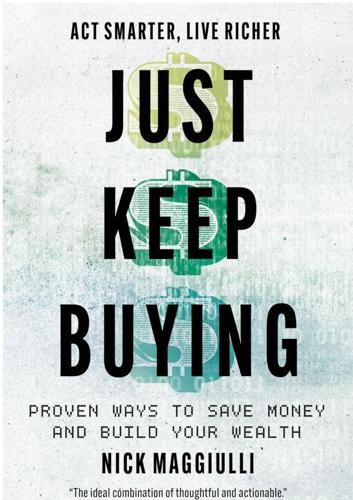
Just Keep Buying: Proven Ways to Save Money and Build Your Wealth
by
Nick Maggiulli
Published 15 May 2022
In fact, according to multiple studies, the expected annual return on angel investments is in the 20%–25% range.⁷¹ However, these returns aren’t without a very large skew. An Angel Capital Association study found that just one in nine angel investments (11%) yielded a positive return.⁷² This goes to show that though some small businesses may become the next Apple, most never make it too far out of the garage. As Sam Altman, famed investor and President of YCombinator, once wrote: “It’s common to make more money from your single best angel investment than all the rest put together. The consequence of this is that the real risk is missing out on that outstanding investment, and not failing to get your money back (or, as some people ask for, a guaranteed 2x) on all of your other companies.”⁷³ This is why small business investing can be so tough, yet also so rewarding.
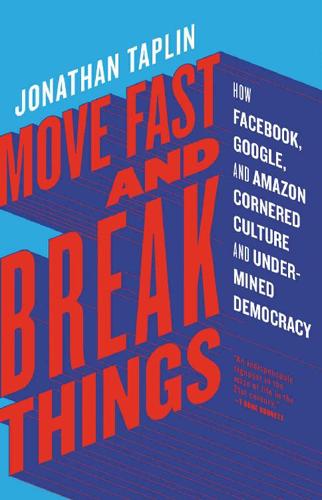
Move Fast and Break Things: How Facebook, Google, and Amazon Cornered Culture and Undermined Democracy
by
Jonathan Taplin
Published 17 Apr 2017
Various subreddits have been devoted to pornography, neo-Nazi propaganda, white power, Gamergate—all in the name of free speech. Since Reddit’s purchase by Condé Nast in 2006, the site has tried to rein in the most outrageous subreddits. But the task of reining in the ultralibertarian Reddit community became too much, and in the fall of 2011 Condé Nast sold off a large share of Reddit to a group led by Sam Altman, Peter Thiel, and Marc Andreessen. At the debate, Ohanian proudly mentioned his personal consumption of “free music and movies” available on the Internet, going so far as to say that musicians such as The Band need to earn their money from touring. From his point of view, Levon Helm had no right to make money from old recordings.
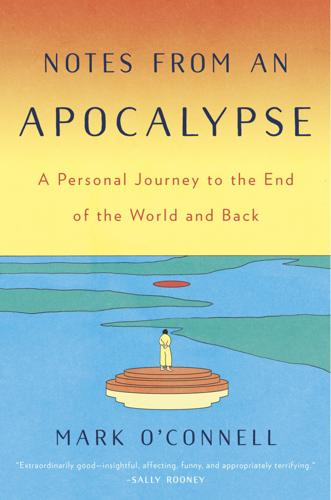
Notes From an Apocalypse: A Personal Journey to the End of the World and Back
by
Mark O'Connell
Published 13 Apr 2020
It had recently emerged that Thiel had bought a sprawling property in New Zealand, on the shores of Lake Wanaka, the apparent intention of which was to provide him with a place to retreat to should America become unlivable due to economic chaos, civil unrest, or some or other apocalyptic event. (Sam Altman, one of Silicon Valley’s most influential entrepreneurs, alluded in an interview to an arrangement with his friend Thiel, whereby in the eventuality of some kind of systemic collapse scenario—synthetic virus breakout, rampaging AI, resource war between nuclear-armed states, and so forth—they both get on a private jet and fly to this property in New Zealand.
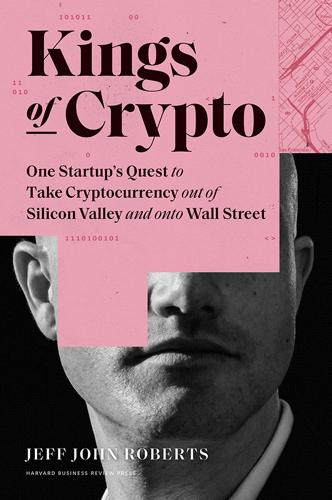
Kings of Crypto: One Startup's Quest to Take Cryptocurrency Out of Silicon Valley and Onto Wall Street
by
Jeff John Roberts
Published 15 Dec 2020
And in Liar’s Poker, he recounts how a trader made a killing at his Wall Street firm by bundling home loans into mortgage bonds—an obvious idea, but a secret at the time because popular consensus dismissed it. In 2012, Brian had grabbed an open secret of his own. He knew bitcoin could be a world-changing technology, but that buying it—for most people—was a confusing, convoluted experience. What if he could make it simpler? Y Combinator President Sam Altman understood the power of such simplicity and what Brian sought to do. “Making things easy to use is important to 99 percent of people, but technical people overlook that. When Dropbox launched, programmers would say, ‘I don’t get why anyone needs this when you can use these command line tools and make backups of all your files,’” he says, describing a computer process obvious to programmers but baffling to everyone else.
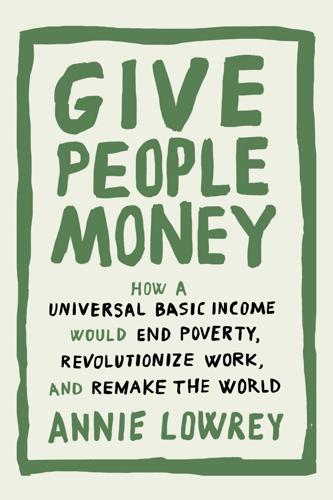
Give People Money
by
Annie Lowrey
Published 10 Jul 2018
“When people join start-ups or work in tech, there’s an aspirational nature to it. But very few CEOs are happy with the idea that their work is going to cause a lot of stress and harm.” Yet the boosterism also does seem to be ignited by a real concern that we are in the midst of a profound economic and technological revolution. Sam Altman, the president of Y Combinator, recently spoke at a poverty summit cohosted by Stanford, the White House, and the Chan Zuckerberg Initiative, the Facebook billionaire’s charitable institution. “There have been these moments where we have had these major technology revolutions—the Agricultural Revolution, the Industrial Revolution, for example—that have really changed the world in a big way,” he said.

12 Bytes: How We Got Here. Where We Might Go Next
by
Jeanette Winterson
Published 15 Mar 2021
If digital social passports become normal, and if such passports can be used to decide who goes where, who does what, gets what, pays what (China is mooting charging systems that offer discounts to exemplary citizens), then how we live changes collectively, as well as individually – and perhaps it will make us less compassionate too. We won’t know what’s in the data of the person turned away or turned down or charged double, and likely we will feel it must be justified – mustn’t it? And we all like to feel superior to others. * * * Elon Musk and Sam Altman (CEO of the start-up funder Y Combinator) launched OpenAI in 2015 as a non-profit organisation promoting more inclusive AI – more benefits for more people – and to explore safe AGI. (We don’t want a Skynet situation.) Musk, who has since left the organisation due to what he calls conflicts of interest, is notably worried about artificial general intelligence – the point where AI becomes an autonomous self-monitoring system.

Reinventing Capitalism in the Age of Big Data
by
Viktor Mayer-Schönberger
and
Thomas Ramge
Published 27 Feb 2018
UBI, as it is affectionately called by its proponents, has garnered surprising support, particularly among leading figures in the high-tech sector. “Superangel” investor Marc Andreessen, the coauthor of Mosaic, one of the first widely used Web browsers, is in favor of it. And so are New York–based Albert Wenger, another highly successful venture capitalist; start-up incubator impresario Sam Altman; and Elon Musk, the brash but congenial cofounder of PayPal and CEO of Tesla. Silicon Valley isn’t alone in its enthusiasm for UBI, but it is Silicon Valley’s digital and data-driven innovations that have given rise to the idea. There are innumerable variations, but the core idea is similar. Everyone receives a monthly check for a fixed amount that would be sufficient to pay for food, clothing, basic education, a warm, dry home, perhaps even some form of health insurance.

Open for Business Harnessing the Power of Platform Ecosystems
by
Lauren Turner Claire
,
Laure Claire Reillier
and
Benoit Reillier
Published 14 Oct 2017
Ries, The Lean Startup, New York: Crown Publishing, 2011. 3 While Hilton can manage and tightly control the experience of its guests, Airbnb can only influence the experience provided by the hosts. 4 Henry Blodget, 19 January 2015, Business Insider, http://uk.businessinsider.com/uberrevenue-san-francisco-2015-1. 5 Hilton Investor Presentation, November 2015. 6 The Platform Design Toolkit 2.0, the ecosystem’s motivation matrix, by Simone Cicero, www.meedabyte.com. 7 Airbnb CEO Brian Chesky routinely tweets their nights booked milestones. 8 Alex Schultz, How to Start a Start-up, Lecture 6: Growth, Sam Altman. 9 We have seen a number of interesting implementations of Mirakl at Galeries Lafayette, Darty, Halfords and l’Equipe. 10 LoveKnitting, the marketplace for knitting yarn, patterns and needles, was initially built on Magento. Truly, a marketplace for unique experiences, was initially built on an even tighter budget, using WordPress and WooCommerce, before migrating to Magento.
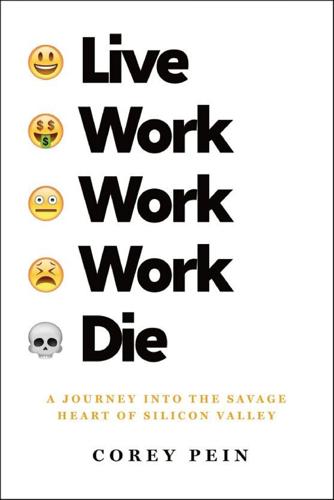
Live Work Work Work Die: A Journey Into the Savage Heart of Silicon Valley
by
Corey Pein
Published 23 Apr 2018
I browsed the tech press for inspiration, returning, as ever, to Hacker News, the internet home page for people who were convinced they were the world’s smartest people, and I found an essay by the website’s founder, Paul Graham, called “Before the Startup.” That seemed to describe where I was. The essay was adapted from a guest lecture Graham delivered to his business partner Sam Altman’s startup class at Stanford. “The way to succeed in a startup is not to be an expert on startups, but to be an expert on your users and the problem you’re solving for them,” Graham wrote. I was an expert in nothing, which in Graham’s formulation put me at a slight advantage over people who were experts on startups.
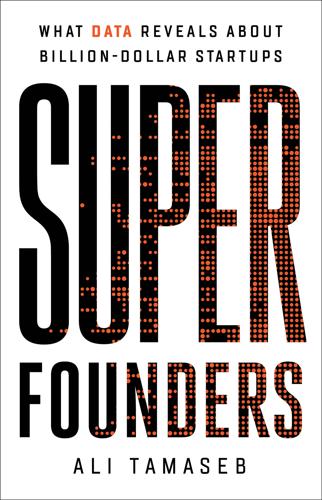
Super Founders: What Data Reveals About Billion-Dollar Startups
by
Ali Tamaseb
Published 14 Sep 2021
National Bureau of Economic Research, September 1, 2016, www.nber.org/papers/w22587. 5. Startup School, “How to Raise Money,” video, October 21, 2014, https://startupclass.samaltman.com/courses/lec09/. 6. Leo Polovets, “Startups Are Risk Bundles,” Codingvc (blog), March 3, 2016, www.codingvc.com/startups-are-risk-bundles/. 7. Sam Altman, “Lecture 9: How to Raise Money (Marc Andreessen, Ron Conway, Parker Conrad),” How to Start a Startup, October 21, 2014, https://startupclass.samaltman.com/courses/lec09/. 8. National Venture Capital Association, 2020 Yearbook, https://nvca.org/research/nvca-yearbook/. CHAPTER 18: FUNDRAISING 1.
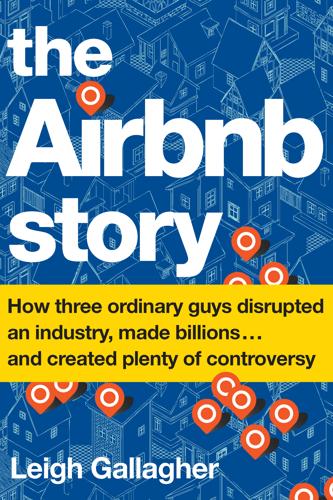
The Airbnb Story: How Three Ordinary Guys Disrupted an Industry, Made Billions...and Created Plenty of Controversy
by
Leigh Gallagher
Published 14 Feb 2017
v=OQTWimfGfV8. 22 to launch Facebook: Lacy, “Fireside Chat.” 24 “‘I just ruined it,’” says Chesky: Ibid. 25 as Fortune called it: Leena Rao, “Meet Y Combinator’s New COO,” Fortune, August 26, 2015, http://fortune.com/2015/08/26/meet-y-combinators-new-coo/. 28 (log on to his account): Brian Chesky, “1000 days of AirBnB,” Startup School 2010, YouTube, uploaded February 12, 2013, https://www.youtube.com/watch?v=L03vBkOKTrc. Chapter 2: Building a Company 35 “How to Start a Startup”: Sam Altman, “How to Start a Startup,” lecture with Alfred Lin and Brian Chesky, video, accessed October 10, 2016, http://startupclass.samaltman.com/courses/lec10/. 36 (six new core values in 2013): The six core values put in place in 2013 were “Host,” “Champion the Mission,” “Every Frame Matters,” “Be a cereal entrepreneur,” “Simplify,” and “Embrace the Adventure.” 41 in the first half of 2016 alone: “Uber Loses at Least $1.2 Billion in First Half of 2016,” Bloomberg BusinessWeek, August 25, 2016, https://www.bloomberg.com/news/articles/2016-08-25/uber-loses-at-least-1-2-billion-in-first-half-of-2016. 45 a surge in bookings: Owen Thomas, “How a Caltech Ph.D.
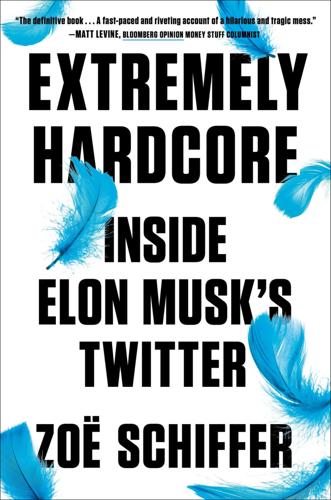
Extremely Hardcore: Inside Elon Musk's Twitter
by
Zoë Schiffer
Published 13 Feb 2024
“First, although Twitter has consistently represented in securities filings that ‘fewer than 5%’ of its [monetizable daily active users] are false or spam accounts, based on the information provided by Twitter to date, it appears that Twitter is dramatically understating the proportion of spam and false accounts represented in its [monetizable daily active user] count,” the letter said. The following day, Musk sat onstage across from Sam Altman, CEO of the artificial intelligence firm OpenAI, which Musk had backed early on. The auditorium was packed. Everyone, from Altman to the audience members, wanted to know what was going on with the Twitter deal, but Musk refused to answer. He talked about the platform’s shortcomings—the prevalence of bots, the mistakes it had made in banning former President Trump—at one point even turning to the audience to ask whether they believed 95 percent of Twitter’s users were authentic, as the company claimed.

The Corruption of Capitalism: Why Rentiers Thrive and Work Does Not Pay
by
Guy Standing
Published 13 Jul 2016
In 2016, pilots were being planned in nineteen Dutch municipalities, led by the city of Utrecht, and in Finland, where the government put aside funds (initially €20 million) for a pilot to last two years. On the other side of the Atlantic, the provincial government in Ontario, Canada, is planning a basic income experiment, and the provinces of Quebec and Alberta have indicated interest. There are also private initiatives that show up the timidity of politicians. In California, Sam Altman, president of Y Combinator, a start-up ‘accelerator’, has committed funds to a five-year basic income experiment. GiveDirectly, a charity that channels money directly from online donors to recipients, has moved from giving random individuals a basic income to more community-oriented experiments in Africa.

Forward: Notes on the Future of Our Democracy
by
Andrew Yang
Published 15 Nov 2021
I owe a massive intellectual debt in this book to Ezra Klein, Katherine Gehl, Michael Porter, and Lawrence Lessig, whose work I reference heavily. Thank you to Roger McNamee, Tristan Harris, Jim Steyer, Jaron Lanier, Enoch Liang, Mark Mao, Shoshana Zuboff, and Alastair Mactaggart for being voices of conscience in technology and data and steering my thinking. Thank you to Sam Altman, Rutger Bregman, Annie Lowrey, Andy Stern, Scott Santens, Gisele Huff, Michael Tubbs, and everyone else who has been leading us to universal basic income. Thank you to everyone who has supported Humanity Forward and its vision of an economy that works for people, including Albert Wenger, Susan Danziger, Daniel Negreanu, J.

Masters of Scale: Surprising Truths From the World's Most Successful Entrepreneurs
by
Reid Hoffman
,
June Cohen
and
Deron Triff
Published 14 Oct 2021
By this line of thinking, the subtle details of a product or customer experience matter less than just finding some way to make a splash and get on the radar. Handcrafting? Most MBA students will tell you, “That doesn’t scale.” But ignoring those details won’t work—not in the long run, says Y Combinator’s president from 2014 to 2019, Sam Altman. An acolyte of Paul Graham’s, Sam adhered to the core Y Combinator dictum: It’s better to have one hundred users who love you than a million users who just kind of like you. It’s counterintuitive. You may be thinking If a million people “kind of like” my product enough to buy it, isn’t that better for business than a hundred obsessive oddballs?
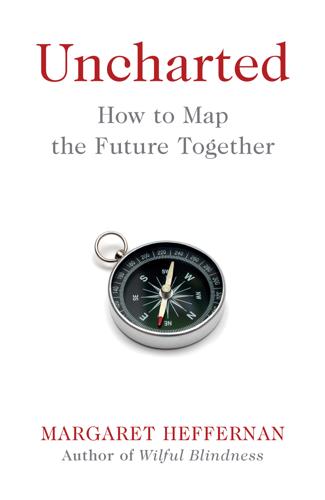
Uncharted: How to Map the Future
by
Margaret Heffernan
Published 20 Feb 2020
I can admire the intellectual dazzle of Kurzweil’s analogies between biology, technology and the stock market; I’m just puzzled by a mind that can’t see that the stock market is already an inadequate model of economics and an even poorer one for life. Why is he, like fellow transhumanists Peter Thiel and Sam Altman, so uninterested in real problems, like the fall in life expectancy, even in rich countries like the United States? Or the immediate climate crisis that could, after all, make eternal life pretty miserable? The vision feels literally disembodied and strangely inhuman. Was it these technologists that Tim Cook had in mind when he said: ‘You cannot possibly be the greatest cause on the earth, because you aren’t built to last’?

Falter: Has the Human Game Begun to Play Itself Out?
by
Bill McKibben
Published 15 Apr 2019
This being the tech industry, though, a newer iteration of the idea is already available. Nectome is one of the handful of start-ups chosen to be part of Y Combinator, the most important of California’s tech incubators. (They’re the people who first championed Dropbox, Airbnb, and Reddit.) In fact, Y Combinator head Sam Altman has already plunked down his $10,000 for Nectome’s service, which involves embalming your brain when you’re near death so that it can later be digitized and encoded. “The idea is that someday in the future scientists will scan your bricked brain and turn it into a computer simulation,” writes Antonio Regalado in MIT Technology Review.13 In fact, this notion that we will one day be meshed with computers and thus live forever has gained currency perhaps because, while bizarre, it seems somehow less absurd than the idea of Ted Williams lumbering around again in the real world.
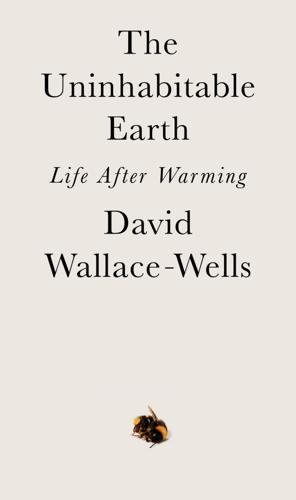
The Uninhabitable Earth: Life After Warming
by
David Wallace-Wells
Published 19 Feb 2019
Peter Thiel may complain about the pace of technological change, but maybe he’s doing so because he’s worried it won’t outpace ecological and political devastation. He’s still investing in dubious eternal-youth programs and buying up land in New Zealand (where he might ride out social collapse on the civilization scale). Y Combinator’s Sam Altman, who has distinguished himself as a kind of tech philanthropist with a small universal-basic-income pilot project and recently announced a call for geoengineering proposals he might invest in, has reportedly made a down payment on a brain-upload program that would extract his mind from this world.

An Ugly Truth: Inside Facebook's Battle for Domination
by
Sheera Frenkel
and
Cecilia Kang
Published 12 Jul 2021
The investment and buyout offers kept coming in: Nicholas Carlson, “11 Companies that Tried to Buy Facebook Back When it Was a Startup,” Business Insider, May 13, 2010. 13. The Yahoo buyout offer: Fass, “Peter Thiel Talks about the Day Mark Zuckerberg Turned down Yahoo’s $1 Billion.” 14. “It was the first point where we had to look at the future”: Mark Zuckerberg’s August 16, 2016 interview with Sam Altman, “How to Build the Future,” can be viewed on YouTube. 15. he spent most of his time working on an idea: Stephen Levy, “Inside Mark Zuckerberg’s Lost Notebook,” Wired, February 12, 2020. 16. Zuckerberg imagined a personalized hierarchy of “interesting-ness”: Steven Levy, Facebook: The Inside Story (New York: Blue Rider Press, 2020). 17.
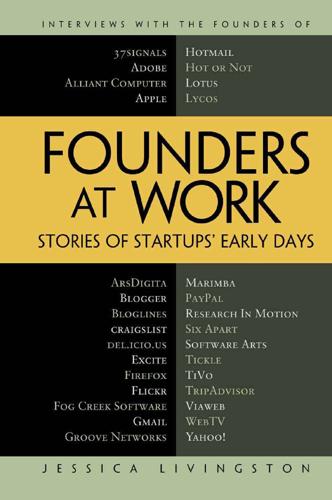
Founders at Work: Stories of Startups' Early Days
by
Jessica Livingston
Published 14 Aug 2008
I’d like to thank many people for their willingness to make introductions: Jim Baum, Patrick Chung, Mark Coker, Jay Corscadden, Rael Dornfest, Jed Dorsheimer, Randy Farmer, Steve Frankel, Anand Gohel, Laurie Glass, James Hong, Mitch Kapor, Morgan Ley, Mike Palmer, Tom Palmer, Bryan Pearce, Andrew Pojani, Will Price, Ryan Singel, Langley Steinert, Chris Sacca, and Zak Stone. Thanks to Kate Courteau for creating cozy offices for me to work in; Lesley Hathaway for all her advice and support; Alaina and David Sloo for their many introductions; and Sam Altman, Paul Buchheit, Lynn Harris, Marc Hedlund, and Aaron Swartz, who read early chapters of the book. I owe thanks to Lisa Abdalla, Michele Baer, Jen Barron, Ingrid Bassett, Jamie Cahill, Jessica Catino, Alicia Collins, Caitlin Crowe, Julie Ellenbogen, John Gregg, Chrissy Hathaway, Katie Helmer, Susan Livingston, Nadine Miller, Sara Morrison, Bridget O’Brien, Becky Osborne, Allison Pellegrino, Jennifer Stevens, and Suzanne Woodard for their encouragement.
…
I thought, “These are the kind of people I want to fund—people who would get off the train and go back and make it happen.” So we wound up funding eight companies that summer. Jessica Livingston 449 Do you remember anyone else in that first batch? Livingston: Looking back, it was an amazing group that we had. Sam Altman of Loopt was in that batch. There’s actually a funny story about him, too. He had submitted an application and at the time he’d been working with a few other people, but he was the only one who could come to Cambridge that summer. So Sam emailed us saying he was the only one who could come and Paul wrote back to him, saying, “You know, Sam, you’re only a freshman.
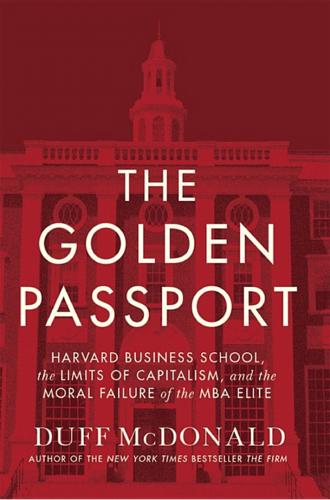
The Golden Passport: Harvard Business School, the Limits of Capitalism, and the Moral Failure of the MBA Elite
by
Duff McDonald
Published 24 Apr 2017
Of those who were self-employed, too, there’s a good bet that many were one-man consulting shops. “The one area where they excel at starting their own firms is in the field of management consultancy,” say the authors of Gravy Training: Inside the Business of Business Schools, “and the value such firms add to the economy is debatable.”25 Thirty years later, Sam Altman, the president of Y Combinator, told the School’s 2014 Cyberposium that MBAs mistake starting a company for the next resume item and that their education trained them for running a business, not for starting one.26 That same year, at a conference organized by HBS’s venture capital and private equity club, startup investor Chamath Palihapitiya made the absurd claim that “I would bet a large amount of money that the overwhelming majority of [venture capitalists] would not look favorably on a company started by one of you.”27 Palihapitiya would lose that bet.
…
Cruikshank, Shaping the Waves: A History of Entrepreneurship at Harvard Business School (Boston: Harvard Business Review Press, 2005), p. 122. 2Ibid., p. 344. 3Ibid., p. 140. 4Ibid. 5Ibid., p. 132. 6Ibid., p. 134. 7Ibid., p. 126. 8HBS course catalog, 1947–48, p. 54. 9Cruikshank, A Delicate Experiment, p. 264. 10David Callahan, Kindred Spirits: Harvard Business School’s Extraordinary Class of 1949 and How They Transformed American Business (Hoboken, NJ: Wiley, 2002), p. 45. 11Laurence Shames, The Big Time: Harvard Business School’s Most Successful Class—and How It Shaped America (New York: HarperCollins, 1986), p. 112. 12Cruikshank, Shaping the Waves, p. 51. 13Ibid., p. 55. 14Ibid., p. 69. 15Ibid. 16Cruikshank, Shaping the Waves, p. 47. 17Ibid., p. 95. 18Ibid., p. 155. 19http://www.scribd.com/doc/186594532/MBAs-at-Unicorns-as-defined-by-Aileen-Lee. 20Cruikshank, Shaping the Waves, p. 165. 21Ibid., p. 227. 22Ibid., p. 295. 23Philip Delves Broughton, Ahead of the Curve: Two Years at Harvard Business School (New York: Penguin Press, 2008), p. 178. 24George Gilder, The Spirit of Enterprise (New York: Simon & Schuster, 1985), p. 147. 25Stuart Crainer and Des Dearlove, Gravy Training: Inside the Business of Business Schools (San Francisco: Jossey-Bass, 1999), p. 27. 26Patrick Daniel, “Sam Altman: Founders Need Passion—Which MBAs Lack,” Harbus, November 24, 2014. 27William Alden, “Tech Investor to Entrepreneurs: A Harvard Degree Is a Liability,” New York Times, DealBook, February 10, 2014. 28“What Is This Palo Alto VC Smoking?,” LinkedIn Pulse, February 12, 2014. 29http://www.alternet.org/election-2012/breaking-update-court-unseals-potentially-devastating-testimony-romney-said-stocks. 30http://www.hbs.edu/faculty/Pages/item.aspx?

The Startup Way: Making Entrepreneurship a Fundamental Discipline of Every Enterprise
by
Eric Ries
Published 15 Mar 2017
At the start of 2017, the government selected roughly two thousand unemployed workers from fields ranging from technology to construction and enrolled them in a pilot UBI program to see what will happen.21 Y Combinator is also running an experiment with basic income, having selected one hundred families in Oakland, California, who will receive $1,000 to $2,000 a month as part of a five-year program designed to look at how ready money affects people’s “happiness, well-being, financial health, as well as how people spend their time.” The data and research methods will be shared at the project’s end so others can learn from and build on the experiment, which is testing the idea, as Y Combinator president Sam Altman says, that a basic income could “give people the freedom to pursue further education or training, find or create a better job, and plan for the future.”22 In France, an experiment that allowed people to keep their unemployment benefits while starting a new business saw an increase of 25 percent per month in the creation of new companies.23 And the Dutch and Canadians aren’t far behind—both countries also launched experiments in 2017.24 REGULATORY RELIEF FOR STARTUPS “Sliding Scale” Regulations Regulation can destroy startups without even meaning to.

A World Without Work: Technology, Automation, and How We Should Respond
by
Daniel Susskind
Published 14 Jan 2020
While those in work rail against the unemployed, those without work also feel aggrieved toward those with it. This, in part, explains the curious reaction to Silicon Valley’s recent enthusiasm about the UBI. Mark Zuckerberg and Elon Musk have made supportive noises about the idea of a UBI; Pierre Omidyar, founder of eBay, and Sam Altman, founder of Y Combinator, have funded trials of it in Kenya and the United States.14 But their interest has been met with widespread hostility. If work were simply a means to an income, that response might seem odd: these entrepreneurs were essentially proposing that people like them should do all the hard work and give everyone else money for free.
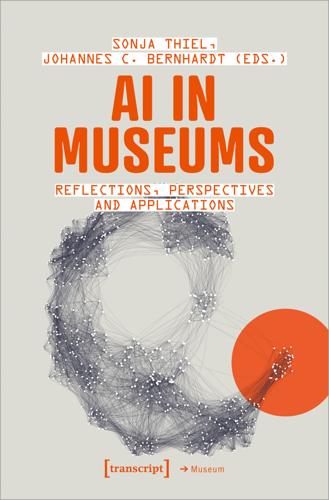
AI in Museums: Reflections, Perspectives and Applications
by
Sonja Thiel
and
Johannes C. Bernhardt
Published 31 Dec 2023
Hamber, Anthony/Miles, Jean/Vaughan, William (Eds.) (1989). Computers and the History of Art. London, Mansell Pub. Hao, Karen (2020). The Messy, Secretive Reality behind OpenAI’s Bid to Save the World. MIT Technology Review, 18 February 2020. Available online at https://www.technologyreview.com/2020/02/17/844721/ai-openai-moonsho t-elon-musk-sam-altman-greg-brockman-messy-secretive-reality/. Mitchell, Margaret/Wu, Simone/Zaldivar, Andrew et al. (2019) Model Cards for Model Reporting. FAT* ’19: Conference on Fairness, Accountability, and Transparency, 29–31 January 2019, 220–29. https://doi.org/10.1145/3287560.3287596. Nygren, Christopher/Drimmer, Sonja (2023).

System Error: Where Big Tech Went Wrong and How We Can Reboot
by
Rob Reich
,
Mehran Sahami
and
Jeremy M. Weinstein
Published 6 Sep 2021
“Due to our concerns about malicious applications of the technology,” the OpenAI team wrote, “we are not releasing the trained model. As an experiment in responsible disclosure, we are instead releasing a much smaller model for researchers to experiment with, as well as a technical paper.” OpenAI was created in 2015 as a nonprofit organization funded by wealthy technologists, including Elon Musk, Peter Thiel, Sam Altman, and Reid Hoffman, who were concerned with charting a path toward safe artificial general intelligence. With a social rather than profit-making mission, the team worried that the powerful tool it created could easily be put to illicit or even nefarious use producing fake text analogous to deep-fake images and videos.
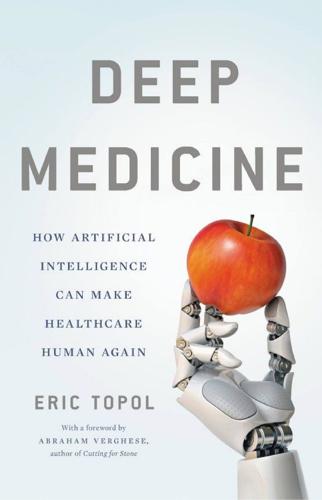
Deep Medicine: How Artificial Intelligence Can Make Healthcare Human Again
by
Eric Topol
Published 1 Jan 2019
Ng said, “Fearing a rise of killer robots is like worrying about overpopulation on Mars before we populate it,”79 whereas Musk has said that the potential rise of killer robots was one reason we needed to colonize Mars—so that we’ll have a bolt-hole if AI goes rogue and turns on humanity.80 Musk’s deep concerns prompted him and Sam Altman to found a billion-dollar nonprofit institute called OpenAI with the aim of working for safer AI. In addition, he gave $10 million to the Future of Life Institute, in part to construct worst-case scenarios so that they can be anticipated and avoided.81 Max Tegmark, the MIT physicist who directs that institute, convened an international group of AI experts to forecast when we might see artificial general intelligence.
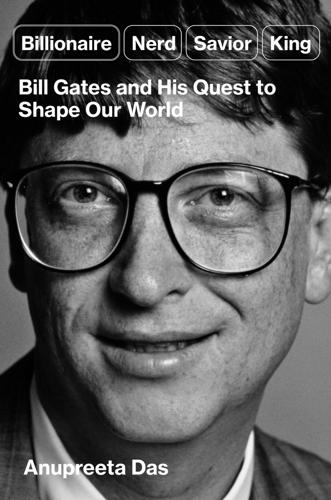
Billionaire, Nerd, Savior, King: Bill Gates and His Quest to Shape Our World
by
Anupreeta Das
Published 12 Aug 2024
In November 2023, a tussle at OpenAI, the leading artificial intelligence start-up, illustrated the fundamental tension between building a “change-the-world” technology with caution and guardrails and rushing to commercialize it with reckless ambition. The board members of the nonprofit that governed OpenAI who fired the company’s chief executive, Sam Altman, reportedly did so out of the concern that Silicon Valley’s move-fast-and-break-things ethos, applied to AI, could have enormous implications for humanity. But Altman—like Gates did with software—had spotted the endless market for AI applications and had pushed hard to move quickly to build a business around it.

Careless People: A Cautionary Tale of Power, Greed, and Lost Idealism
by
Sarah Wynn-Williams
Published 11 Mar 2025
At the heart of it is whether closed AI models or the open-source model pursued by Mark, Meta, and others is the best path for humanity. There’s no question about what China would prefer; as Facebook’s China team used to say, “The Chinese love open source.” Some AI experts in the West see a closed model as critical. They believe that an open model like Facebook’s will allow China to overtake US dominance in AI. Sam Altman says, “China will force U.S. companies and those of other nations to share user data, utilize AI to develop new ways of spying on their own citizens or create next-generation cyberweapons to use against other countries.” Mark disagrees: “Some people argue that we must close our models to prevent China from gaining access to them, but my view is that this will not work and will only disadvantage the US and its allies.

Warnings
by
Richard A. Clarke
Published 10 Apr 2017
DARPA (the Defense Advanced Research Projects Agency), whose mission is to ensure that the U.S. military is “the initiator and not the victim of strategic technological surprises,”19 launched a program for “explainable AI.” “Machine learning and deep learning algorithms . . . we don’t fully understand today how they work.” The new explainable-AI initiative “will give the human operator more details about how the machine used deep learning to come up with the answer.”20 In 2015, business tycoons Elon Musk and Sam Altman created the OpenAI Institute, a nonprofit company that focuses on researching AI. Musk and Altman believe that by making all of OpenAI’s findings open-source and funding it by private donations, eliminating the need for financial return, they can ensure that AI will be developed for the benefit of all people, not for self-interested or destructive aims.
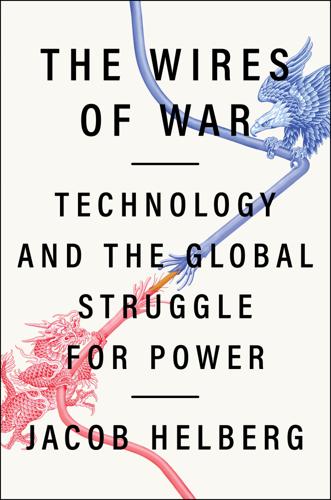
The Wires of War: Technology and the Global Struggle for Power
by
Jacob Helberg
Published 11 Oct 2021
I owe a great deal of gratitude to my friends and former colleagues at Google that have enriched, challenged, and expanded my thinking on technology policy issues over the years: David Graff, Reese Pecot, Paul Haahr, Ian Goodfellow, Lavanya Mahendran, Vijay Padmanabhan, Beth Tsai, Michelle Chang, David Price, Erin Simon, Richard Gingras, Paul Shaw, Clement Wolf, Lara Levin, Maggie Shiels, Sean Casey, Jeff Lazarus, Jen Granito, Andrew Trabulsi, Peter Burke, Ardan Arac, Dan Cary, and Robin Dua. I have also benefited from many conversations with friends across the tech industry: Sam Altman, Peter Thiel, Jason Calacanis, David Sacks, Michael Solona, Erik Torenberg, Delian Asparouhov, Alex MacCaw, Joshua Buckley, Clara Tsao, and Nick Lovrien. I want to thank my current and former colleagues from Brookings, Stanford, and CSIS, whose work have directly and indirectly helped shape many of the concepts in this book (and revisit many others): Tarun Chhabra, Rush Doshi, Tanvi Madan, Michael McFaul, Andrew Grotto, Alex Stamos, Renee DiResta, Eileen Donahoe, Daphne Keller, and Jim Lewis.

What We Owe the Future: A Million-Year View
by
William MacAskill
Published 31 Aug 2022
Whole-body cryopreservation with the Alcor Life Extension Foundation costs $220,000; it costs less than half that if one merely preserves one’s head.76 Some entrepreneurs hope to abandon meat-based bodies altogether and live on in digital form through computer emulation of their brains. Nectome, a Y Combinator–funded start-up that preserves brains with the hope that future generations will scan and upload them, counts Silicon Valley entrepreneur Sam Altman as a customer. Nectome’s founder, Robert McIntyre, describes the service as “100% fatal.”77 If the aim of locking in values and the desire for immortality have been so common throughout history, then we should expect many people to have those aspirations in the future, too. AGI could allow them to become reality.
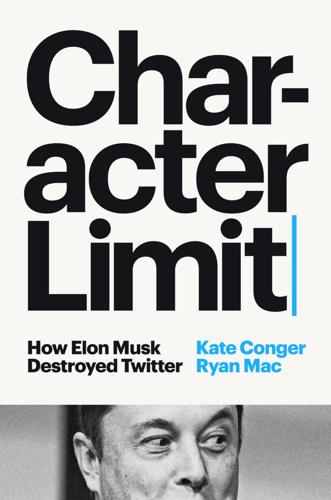
Character Limit: How Elon Musk Destroyed Twitter
by
Kate Conger
and
Ryan Mac
Published 17 Sep 2024
But most of the company’s workers—except those who were bound to X by a need for work visas, healthcare for their families, or simply a loyalty to Musk—scattered to other safe havens in Silicon Valley, landing jobs at the likes of Google, Facebook, and OpenAI. The few who joined OpenAI found themselves working under Bret Taylor once again. The former Twitter chairman was appointed chair at OpenAI after a disastrous upheaval that saw its CEO Sam Altman, removed and then reinstated. After another corporate mess, Taylor was back in Musk’s sights. In March 2024, Musk sued OpenAI, alleging the company had violated its founding charter to build AI that would benefit humanity. Meanwhile, Musk, using resources and engineers from X, raced to build his own artificial intelligence company, xAI, and branded its product as the “anti-woke” alternative to OpenAI, whatever that means.

Architects of Intelligence
by
Martin Ford
Published 16 Nov 2018
The silver lining of all this is that groups and entities are emerging and starting to work on many of these challenges. A great example is the Partnership on AI. If you look at the agenda for the Partnership, you’ll see a lot of these questions are being examined, about bias, about safety, and about these kinds of existential threat questions. Another great example is the work that Sam Altman, Jack Clarke and others at OpenAI are doing, which aims to make sure all of society benefits from AI. Right now, the entities and groups that are making the most progress on these questions have tended to be places that have been able to attract the AI superstars, which, even in 2018, tends to be a relatively small group.

Facebook: The Inside Story
by
Steven Levy
Published 25 Feb 2020
postmortem podcast: “Friendster 1: The Rise,” Startup, April 21, 2017. Buddy Zoo: “AIM Meets Social Network Theory,” Slashdot, April 14, 2003. Chris Hughes: In addition to personal interview, Hughes tells his own story in Fair Shot: Rethinking Inequality and How We Learn (St. Martin’s Press, 2018). “People would just spend hours”: Interview with Sam Altman, Y Combinator, “Mark Zuckerberg: How to Build the Future,” August 16, Zuckerberg Transcripts, 171. steam coming from the suite’s bathroom: Interview with Y Combinator, “Mark Zuckerberg at Startup School 2013,” October 25, 2013, Zuckerberg Transcripts, 160. his first notice: S. F. Brickman, “Not So Artificial Intelligence,” Harvard Crimson, October 23, 2003.